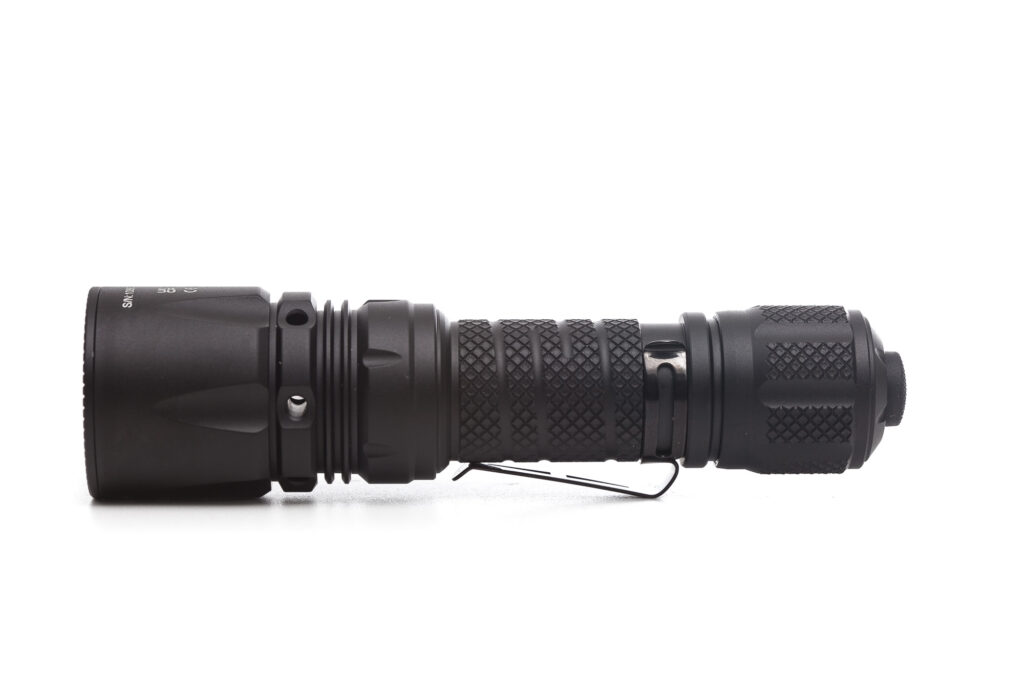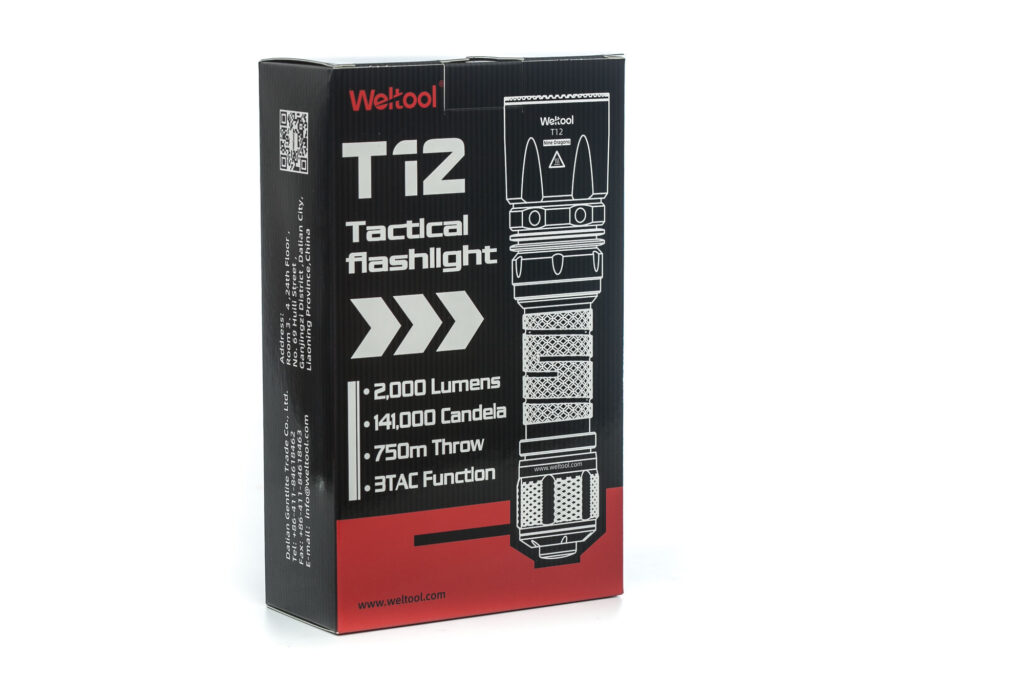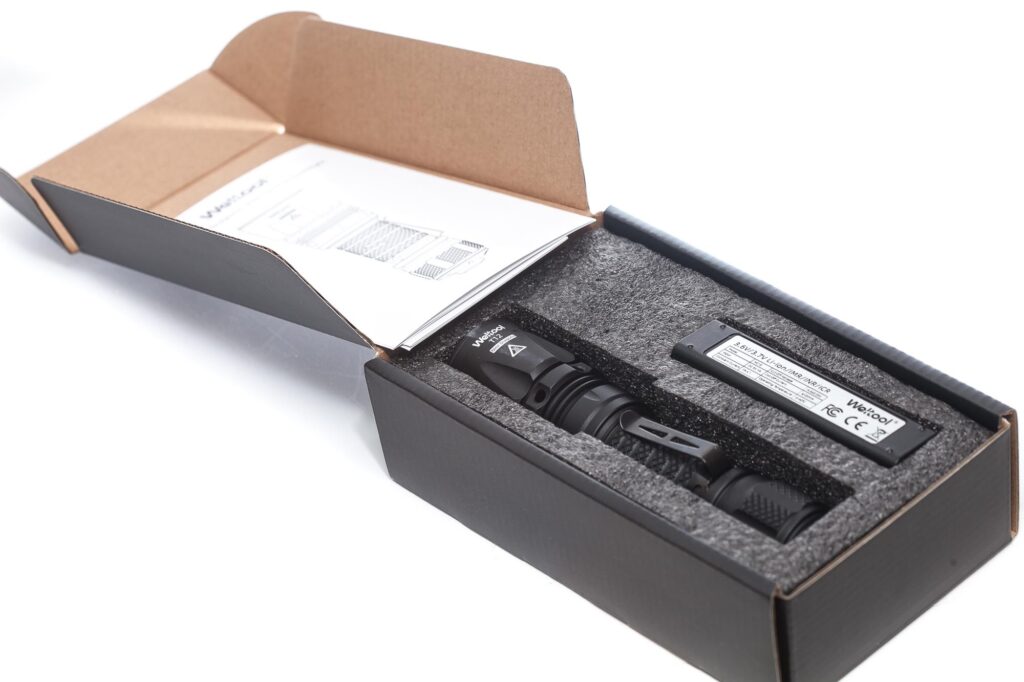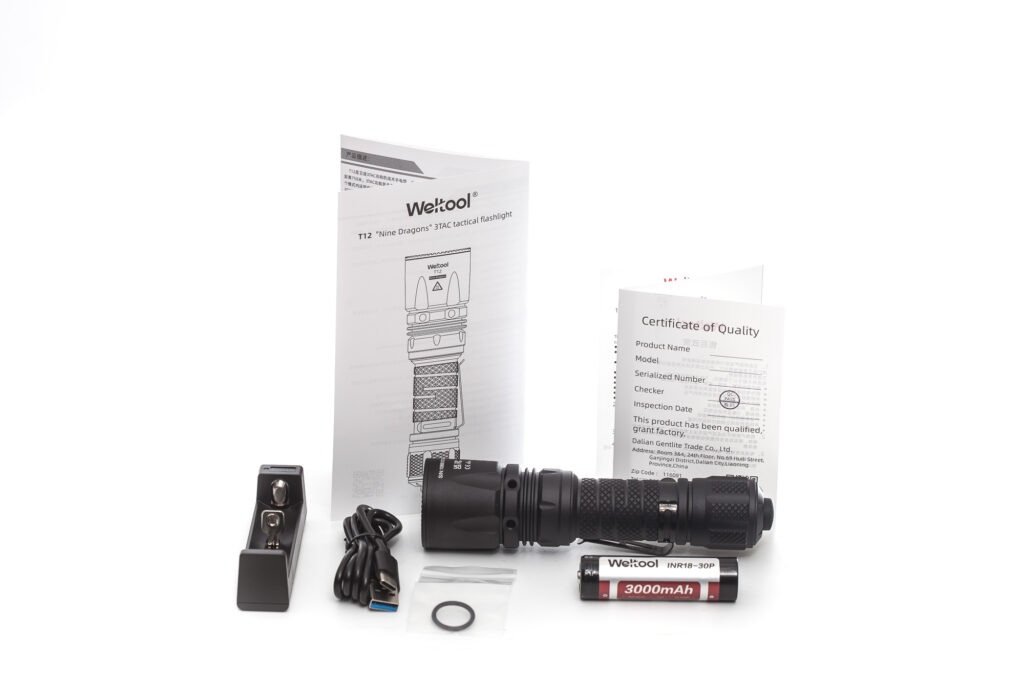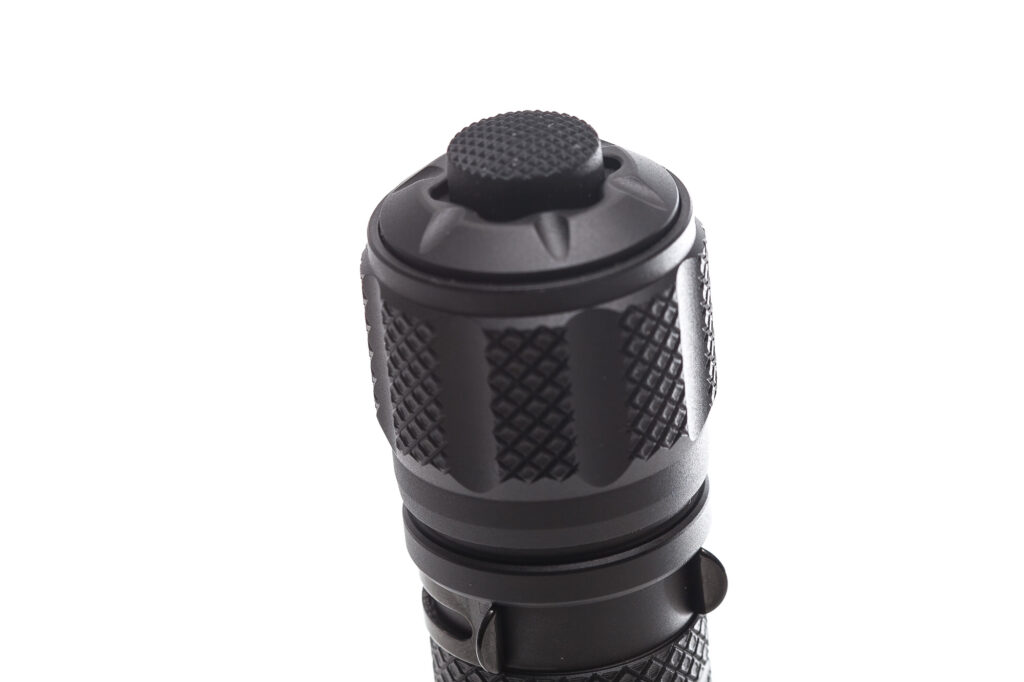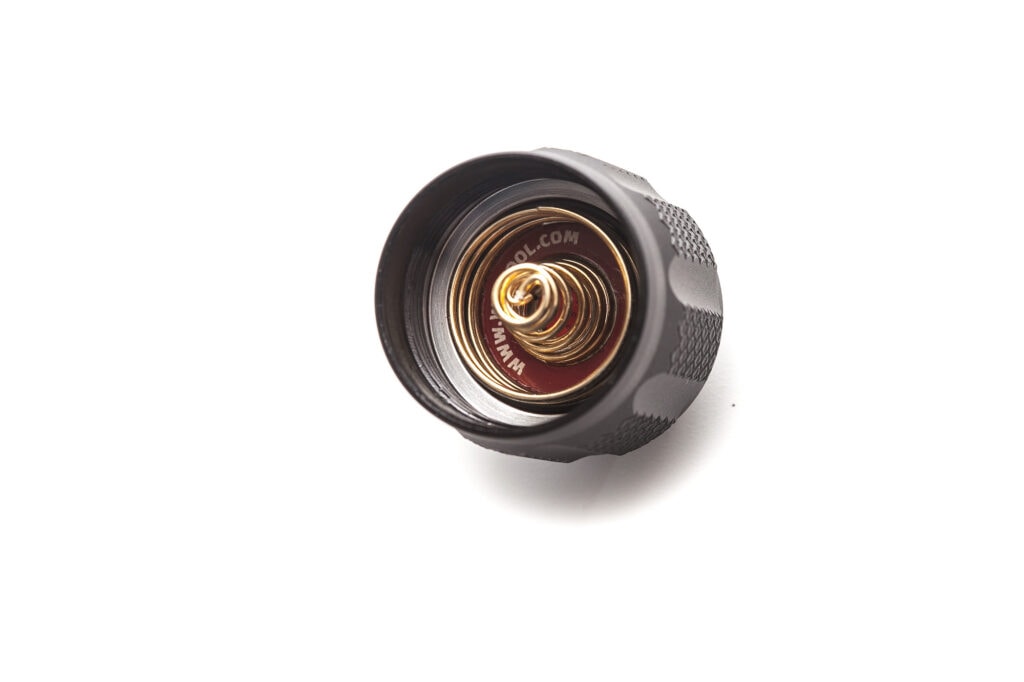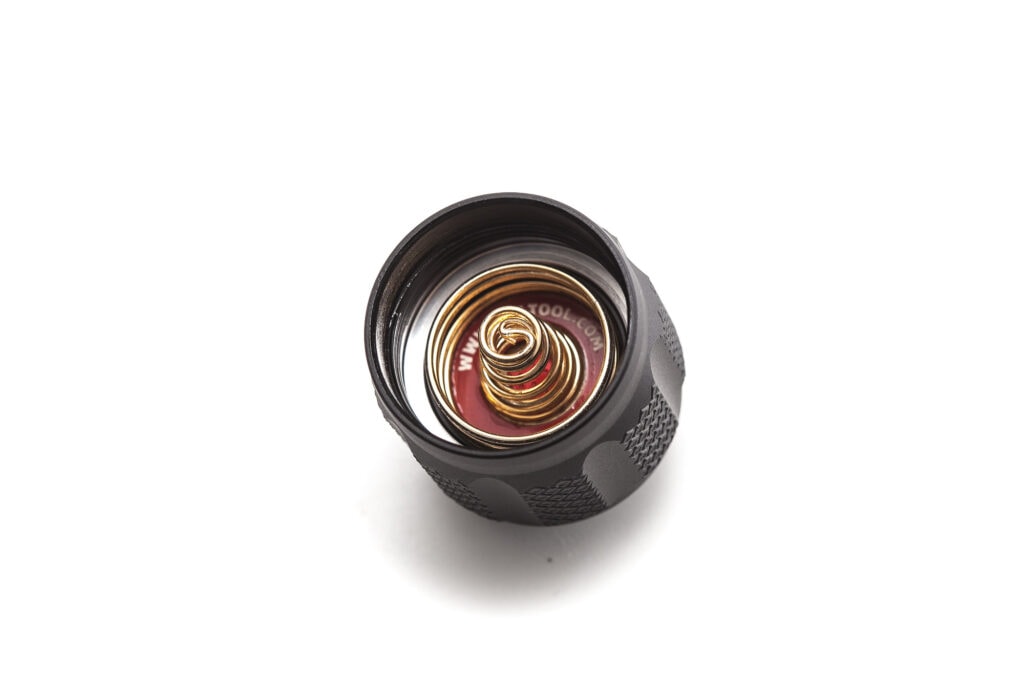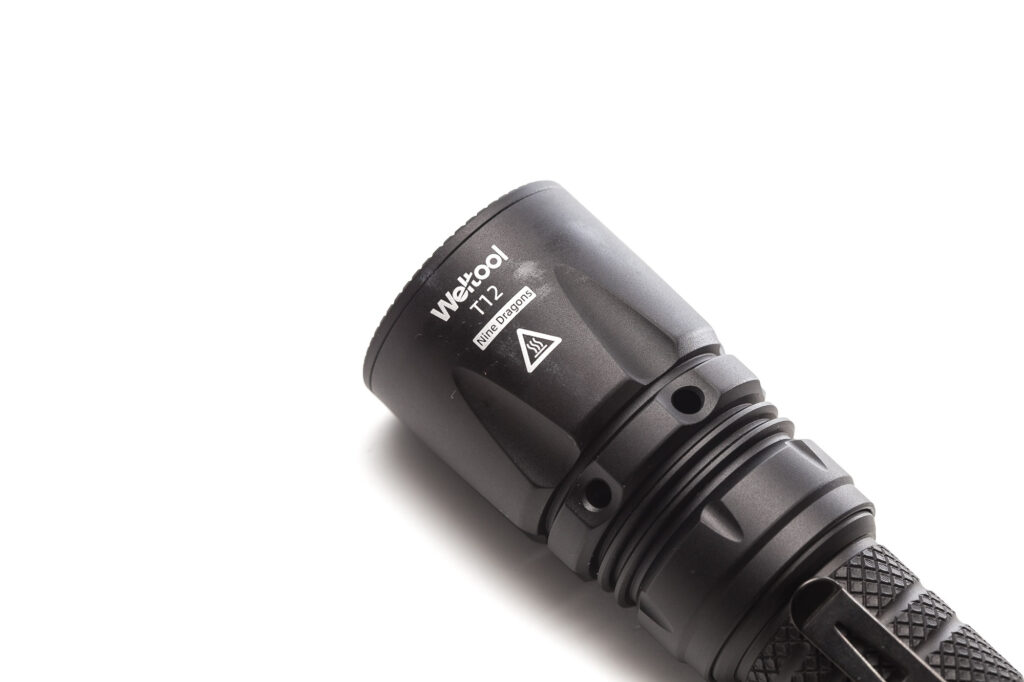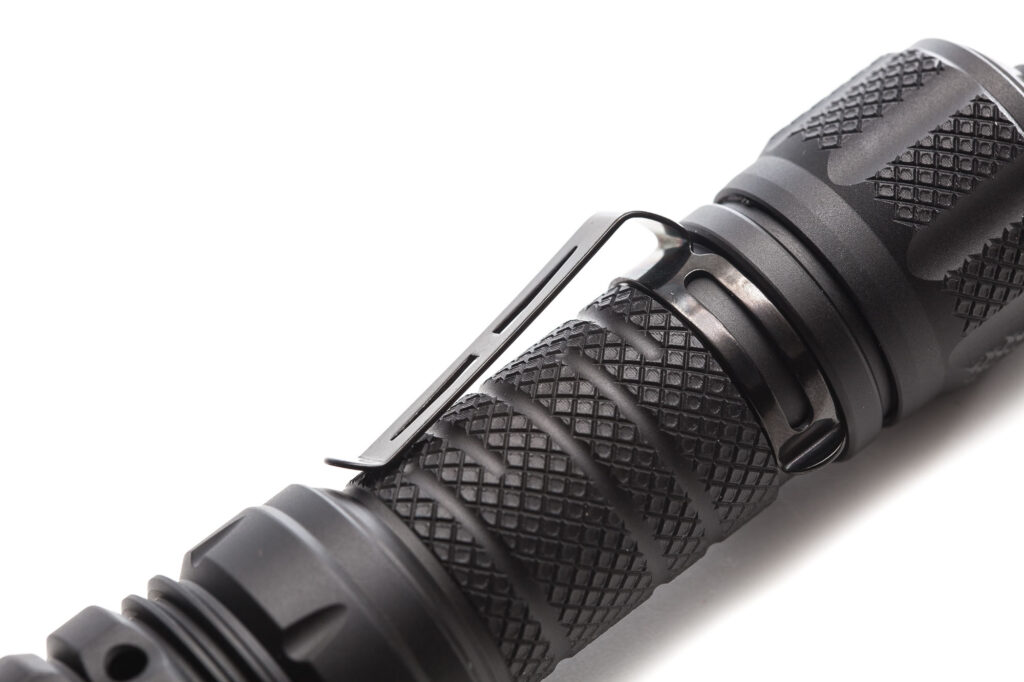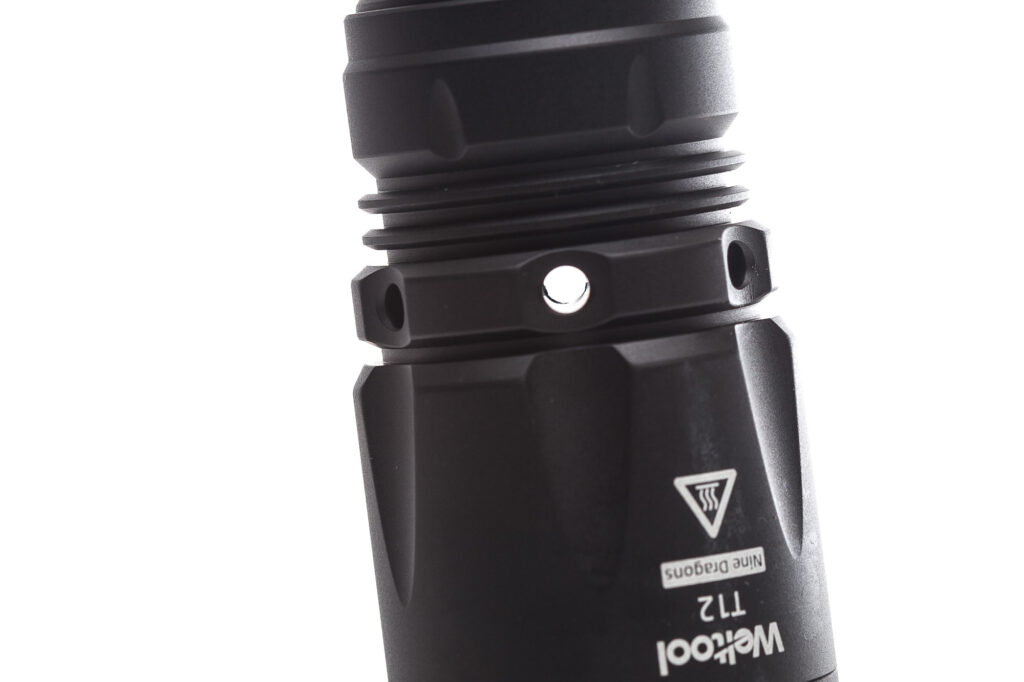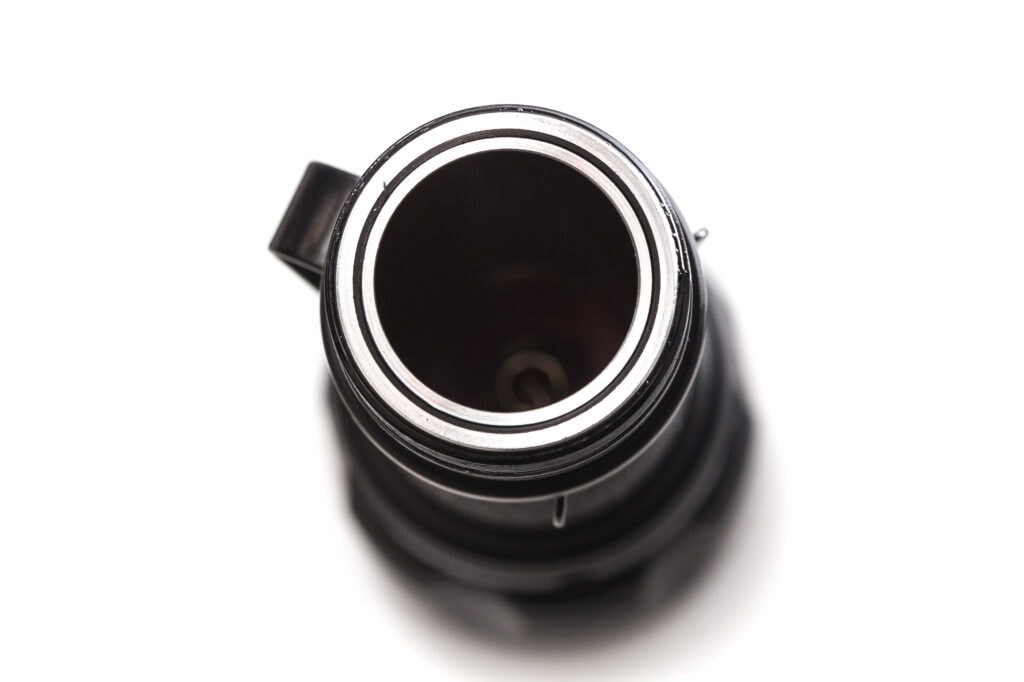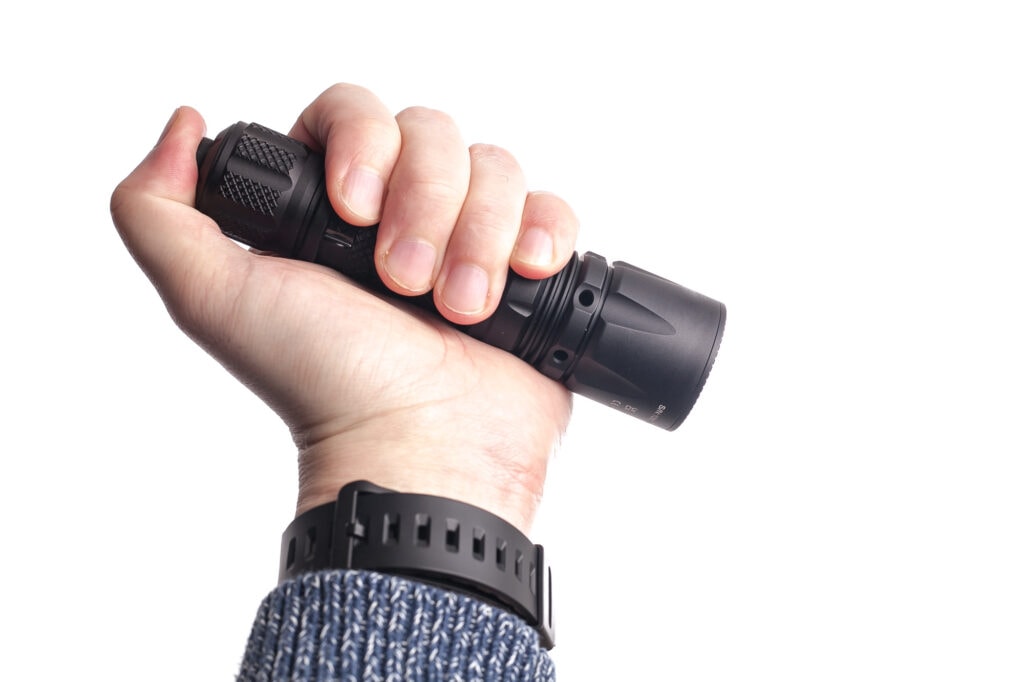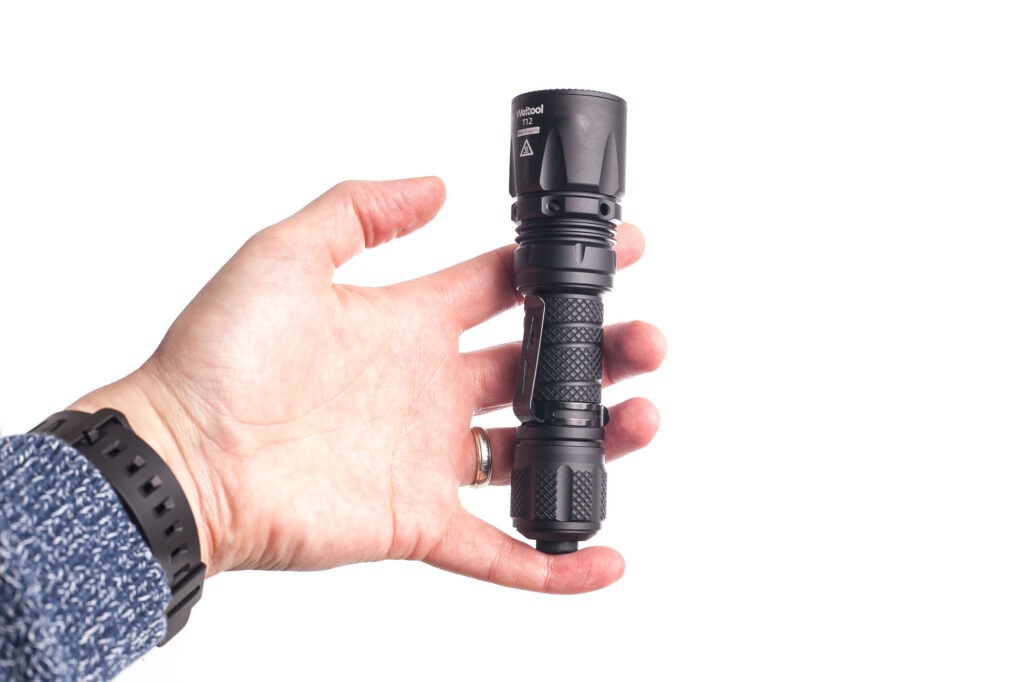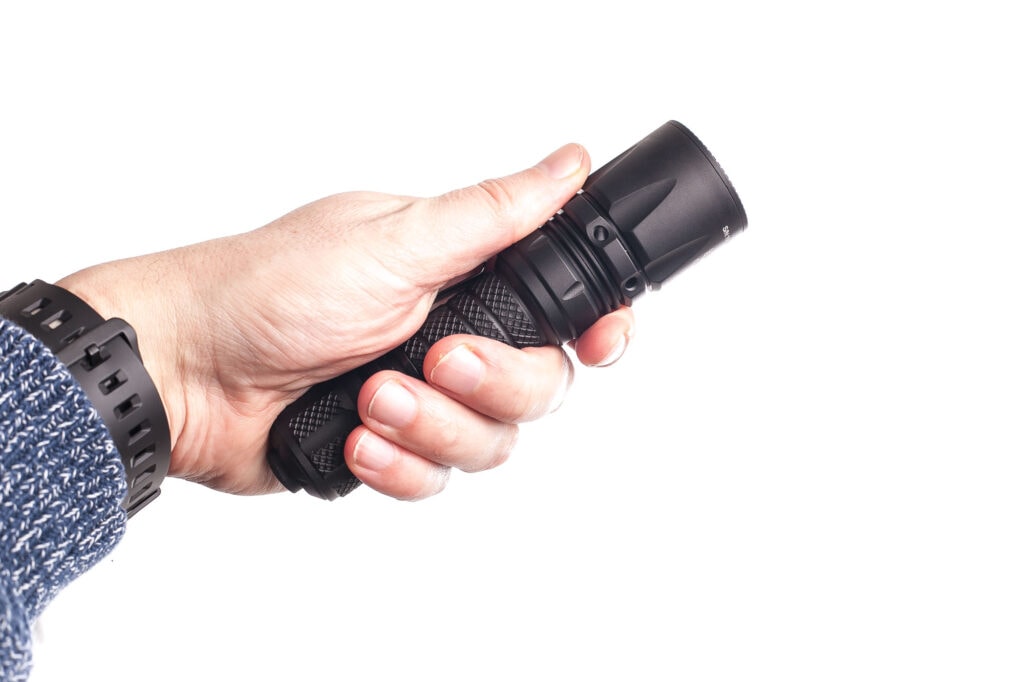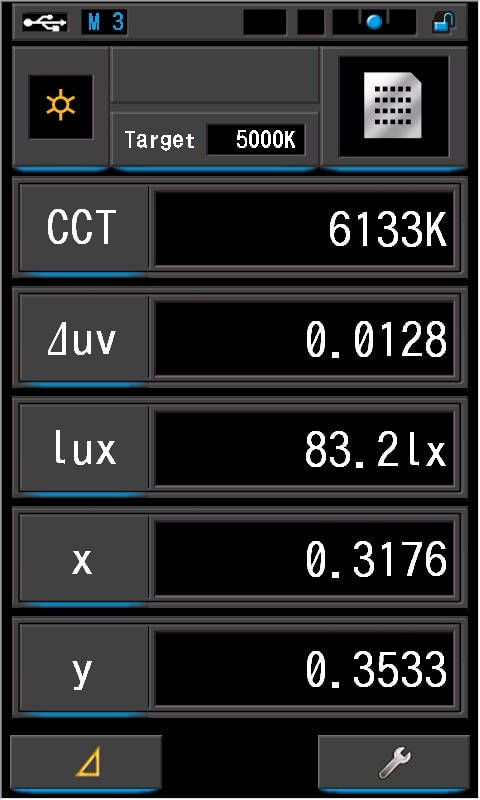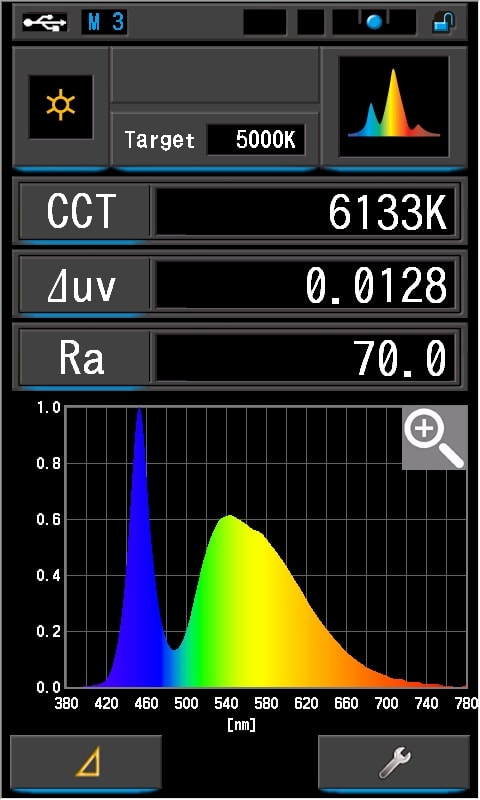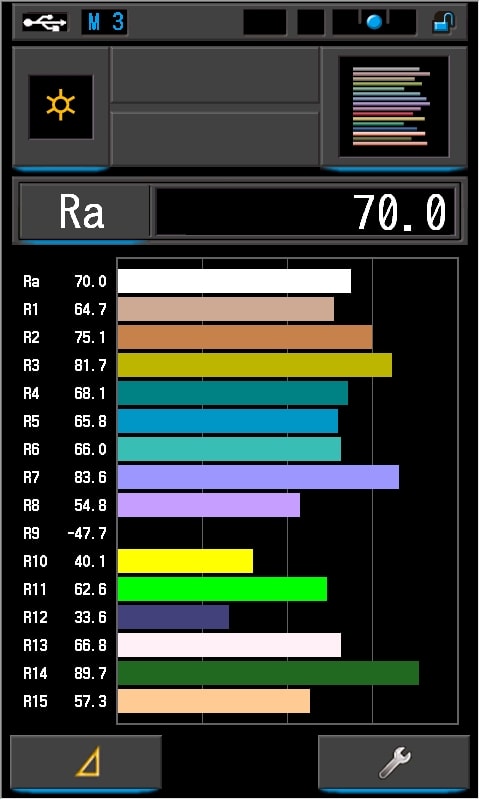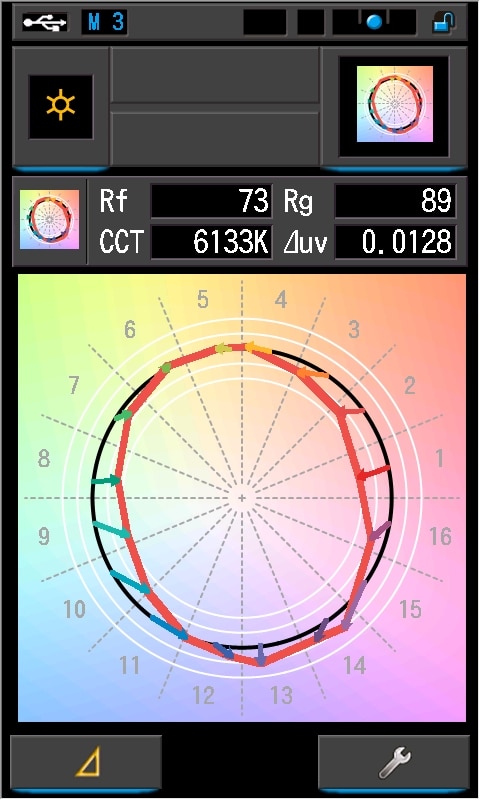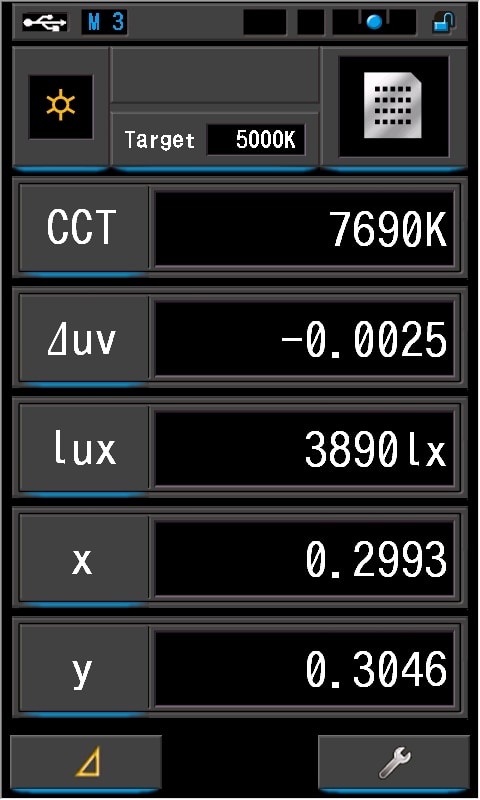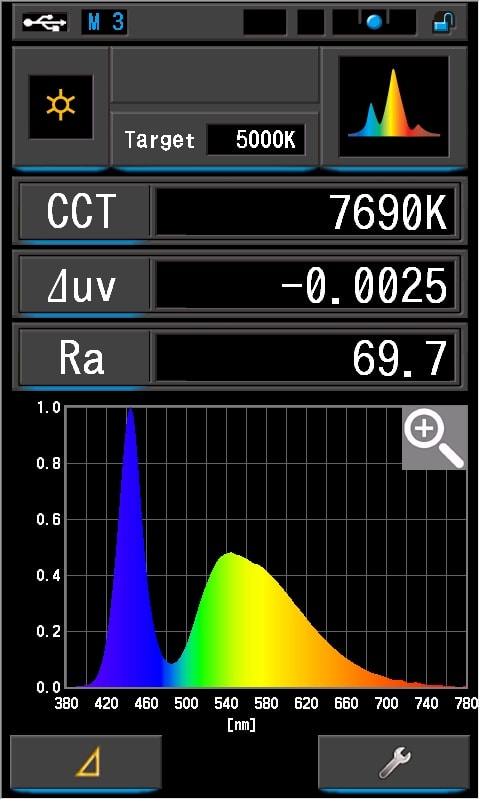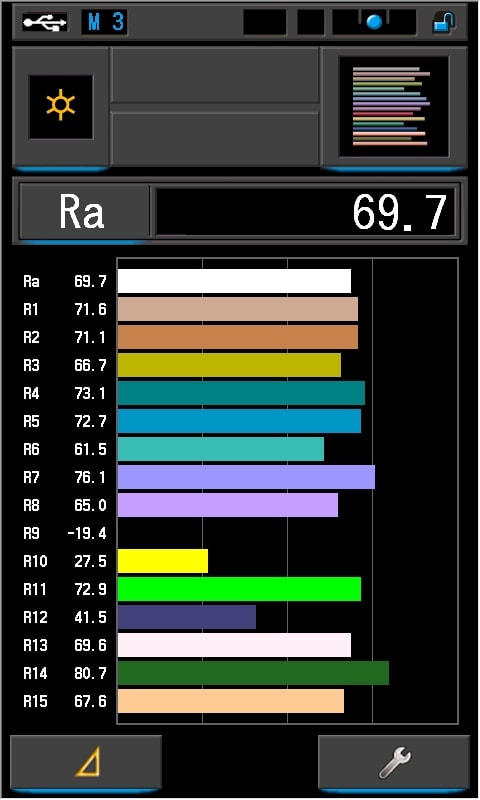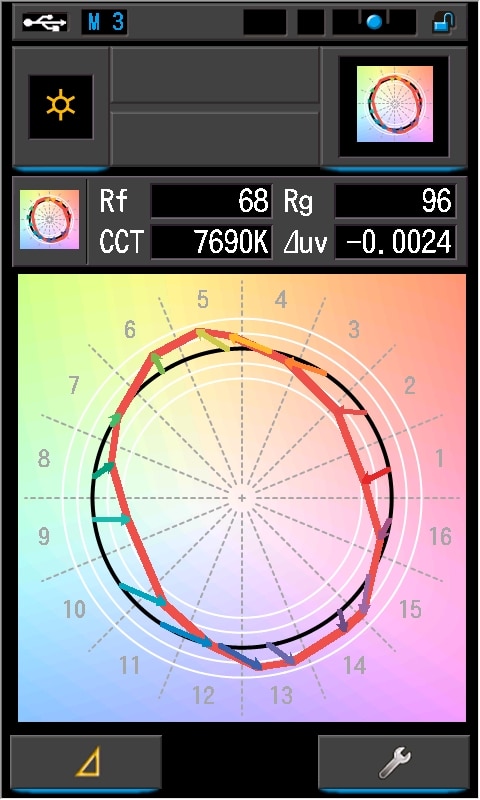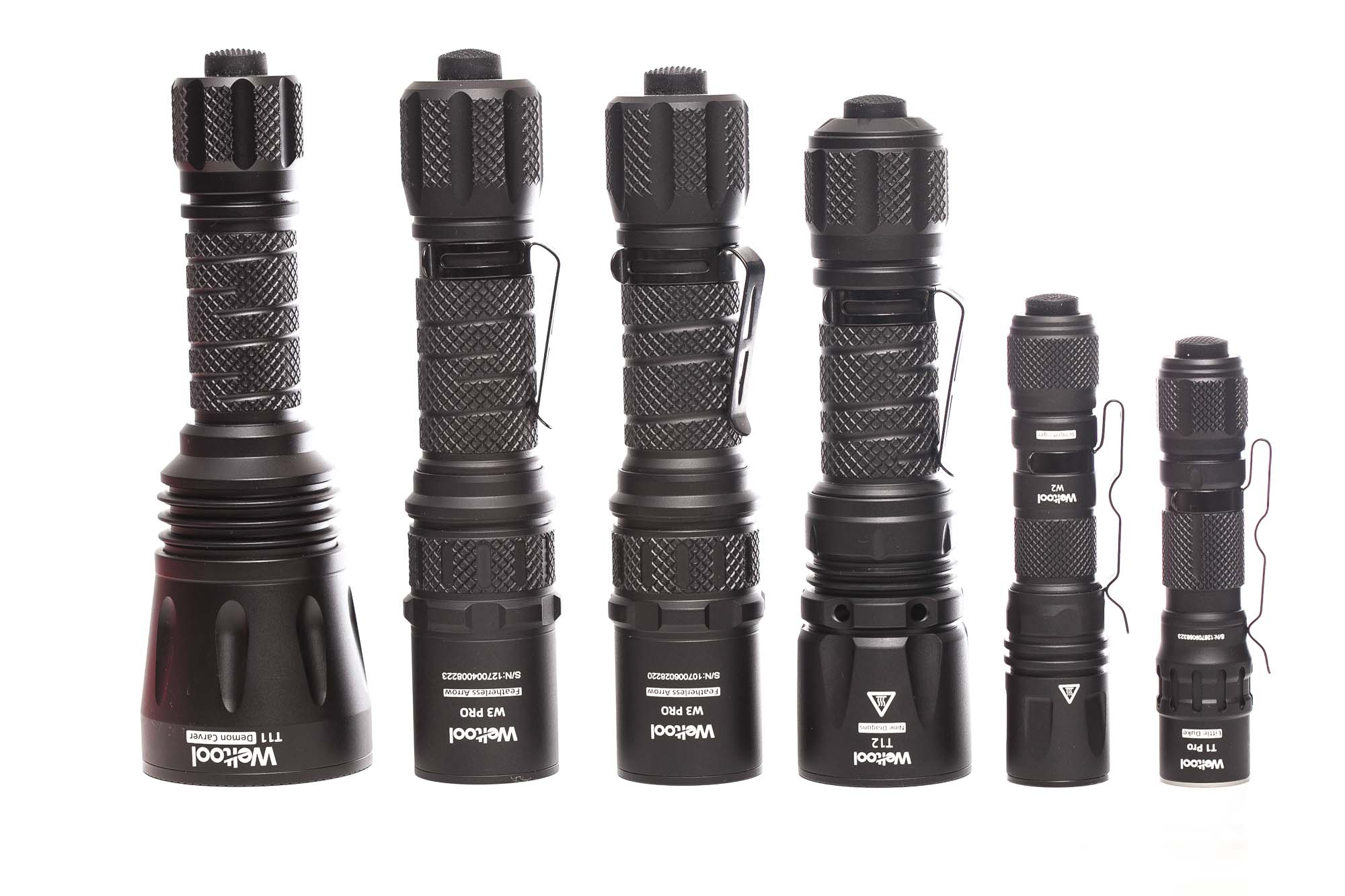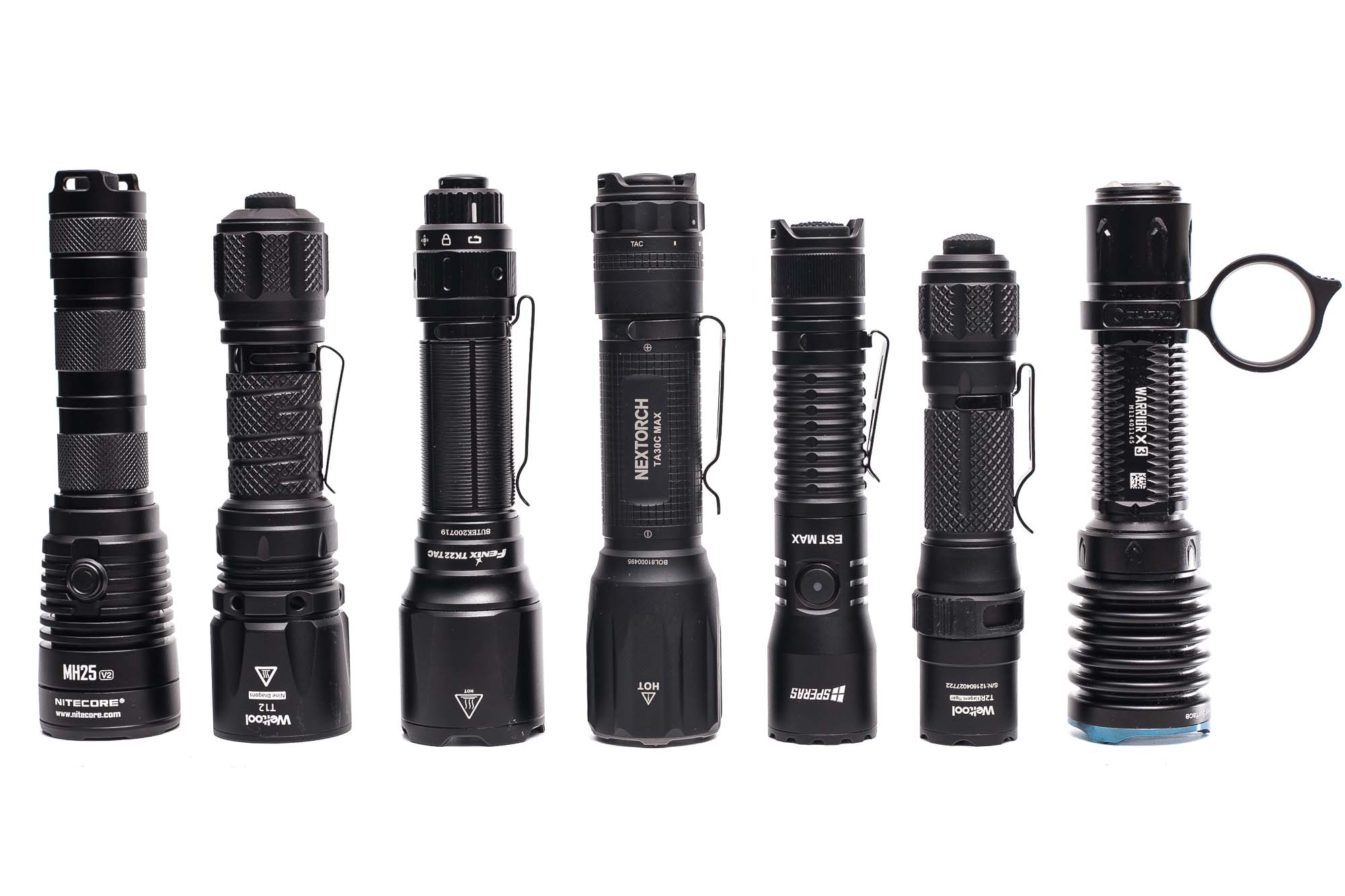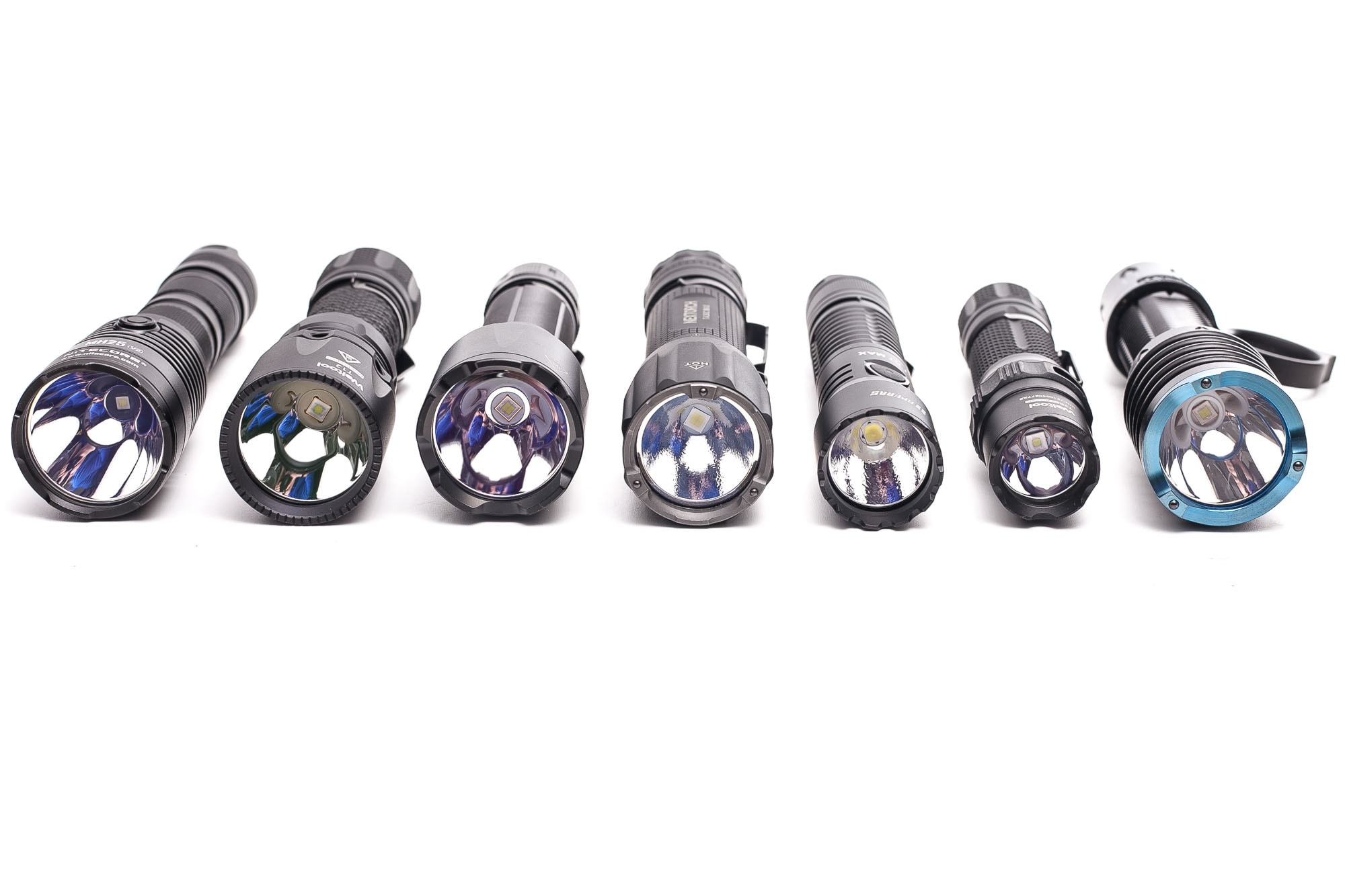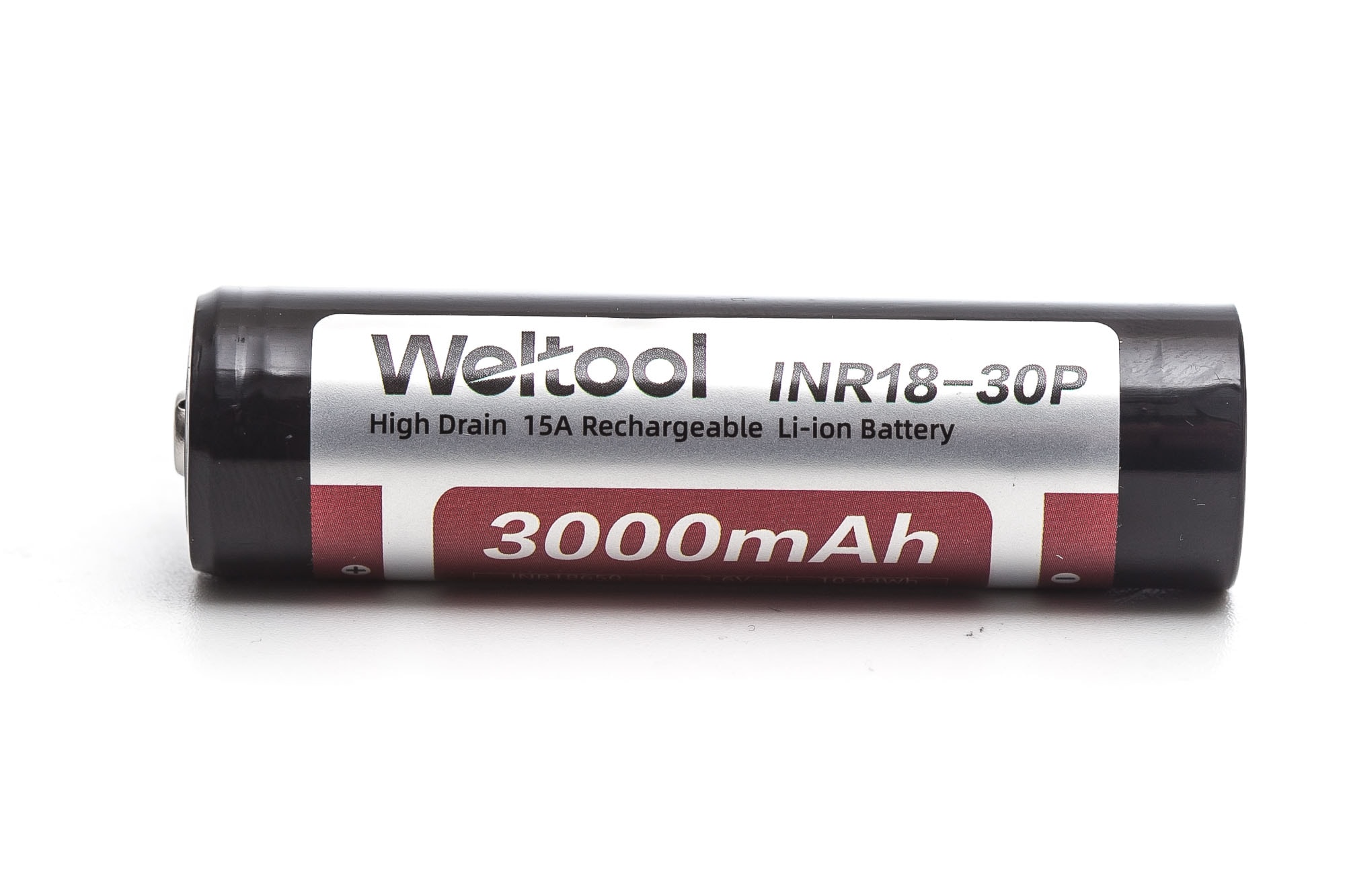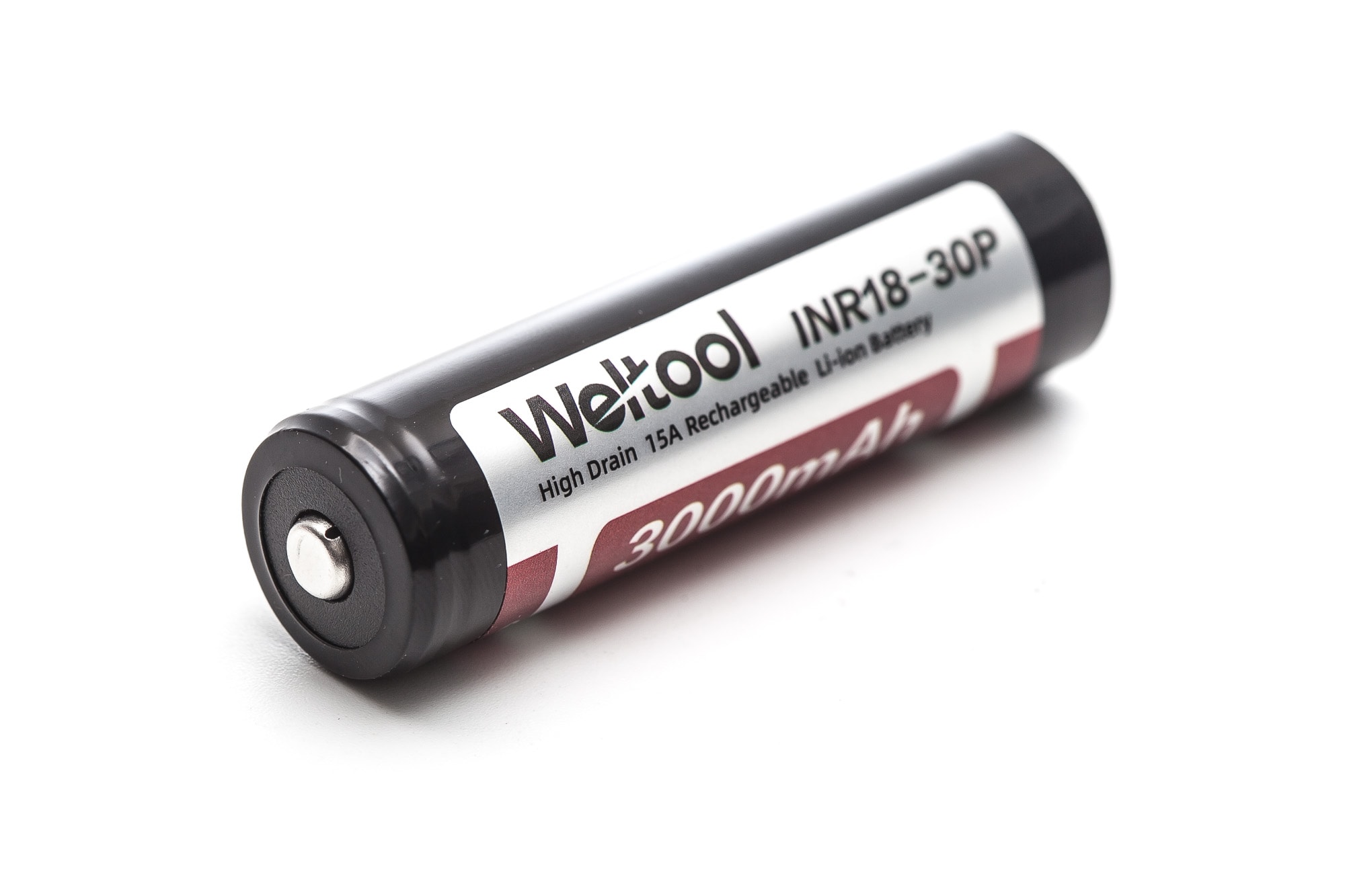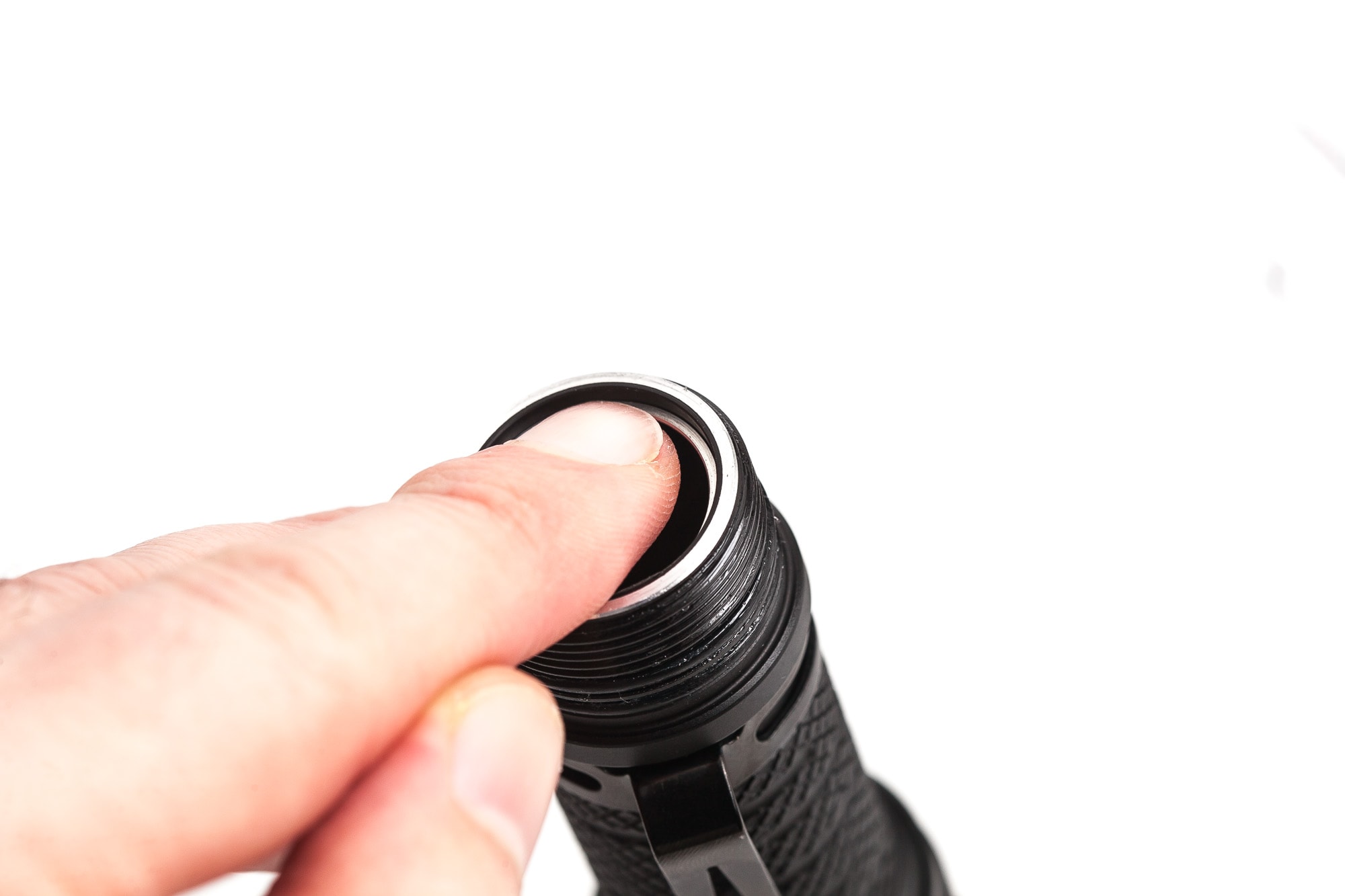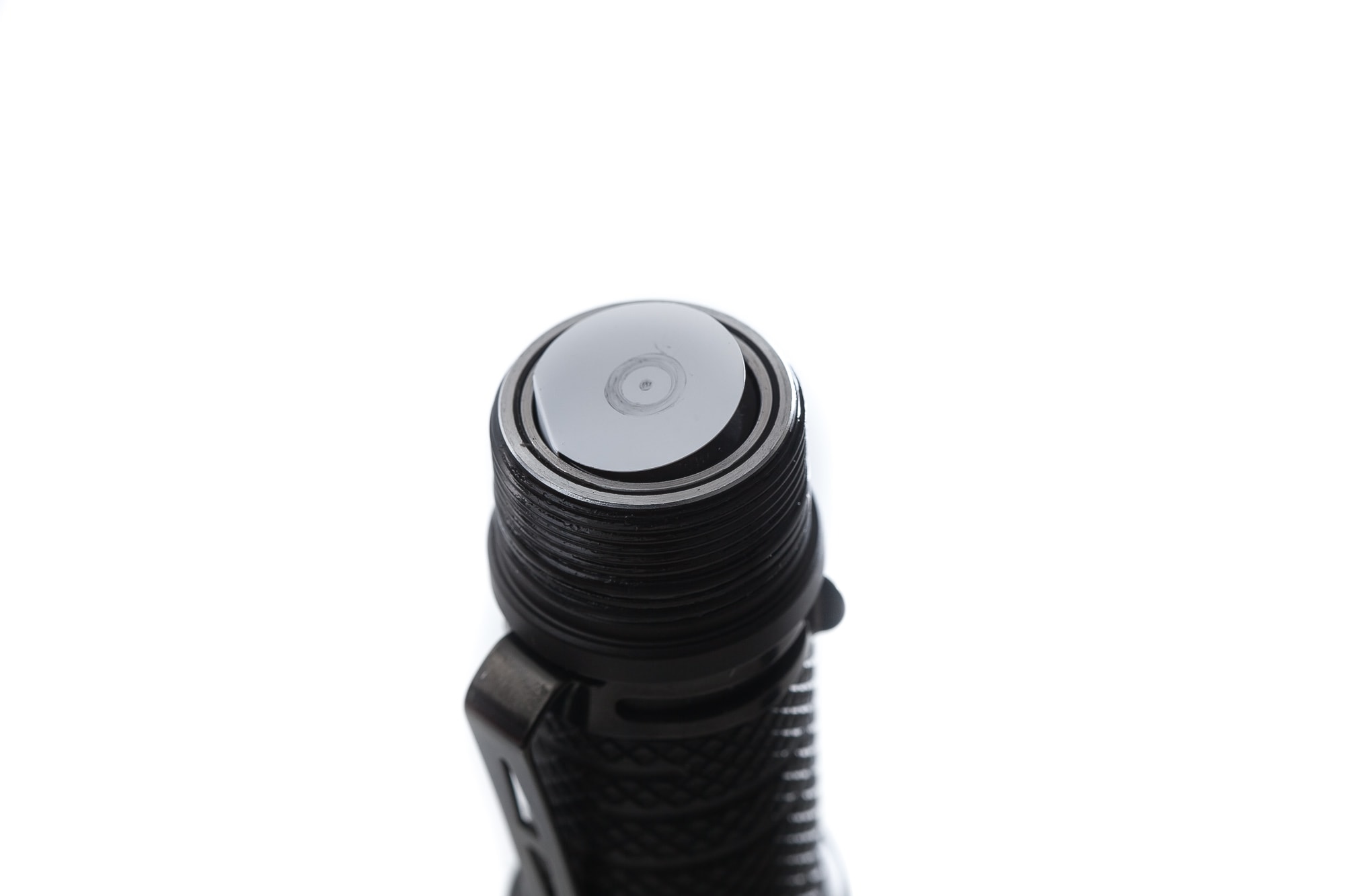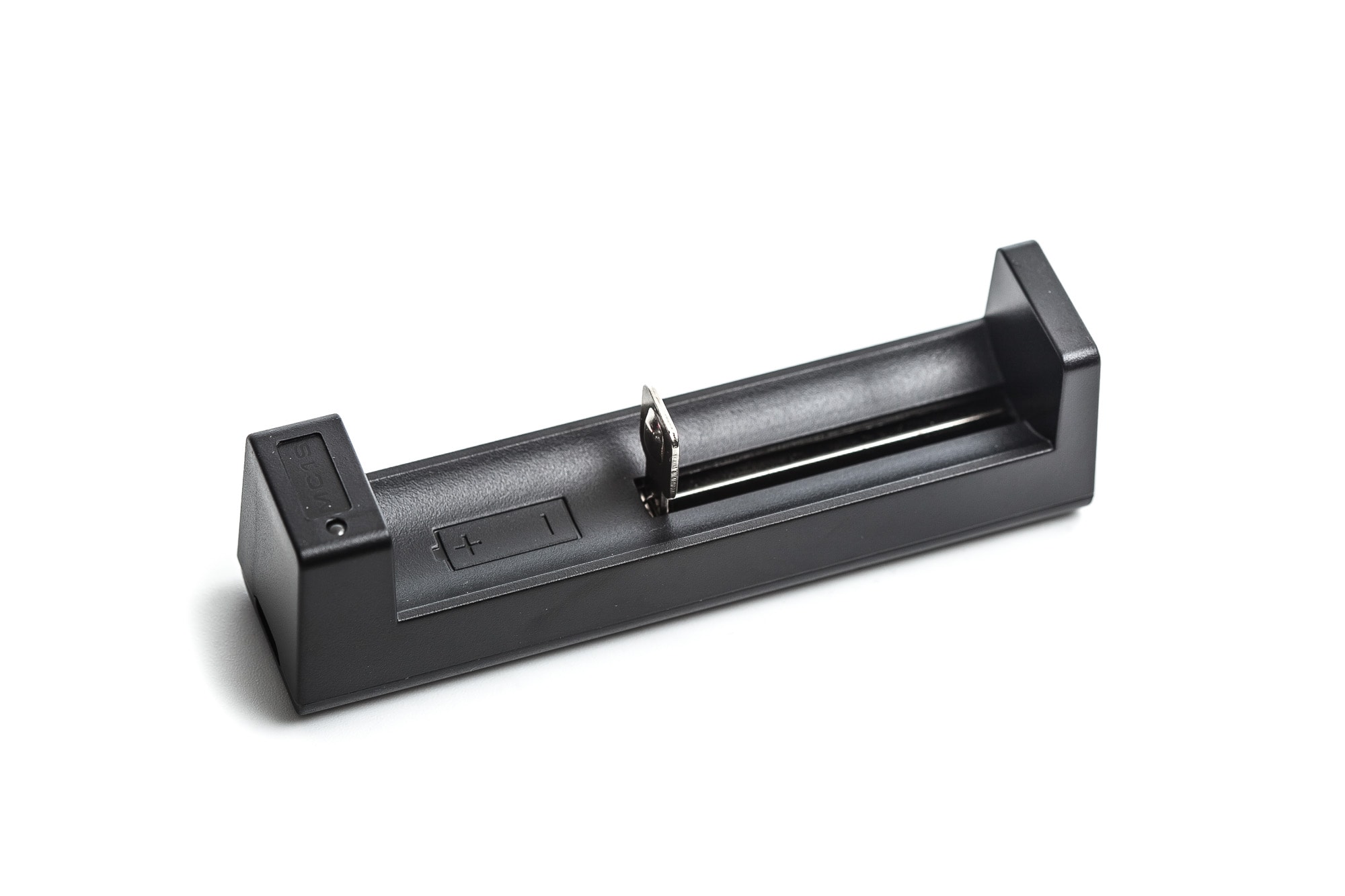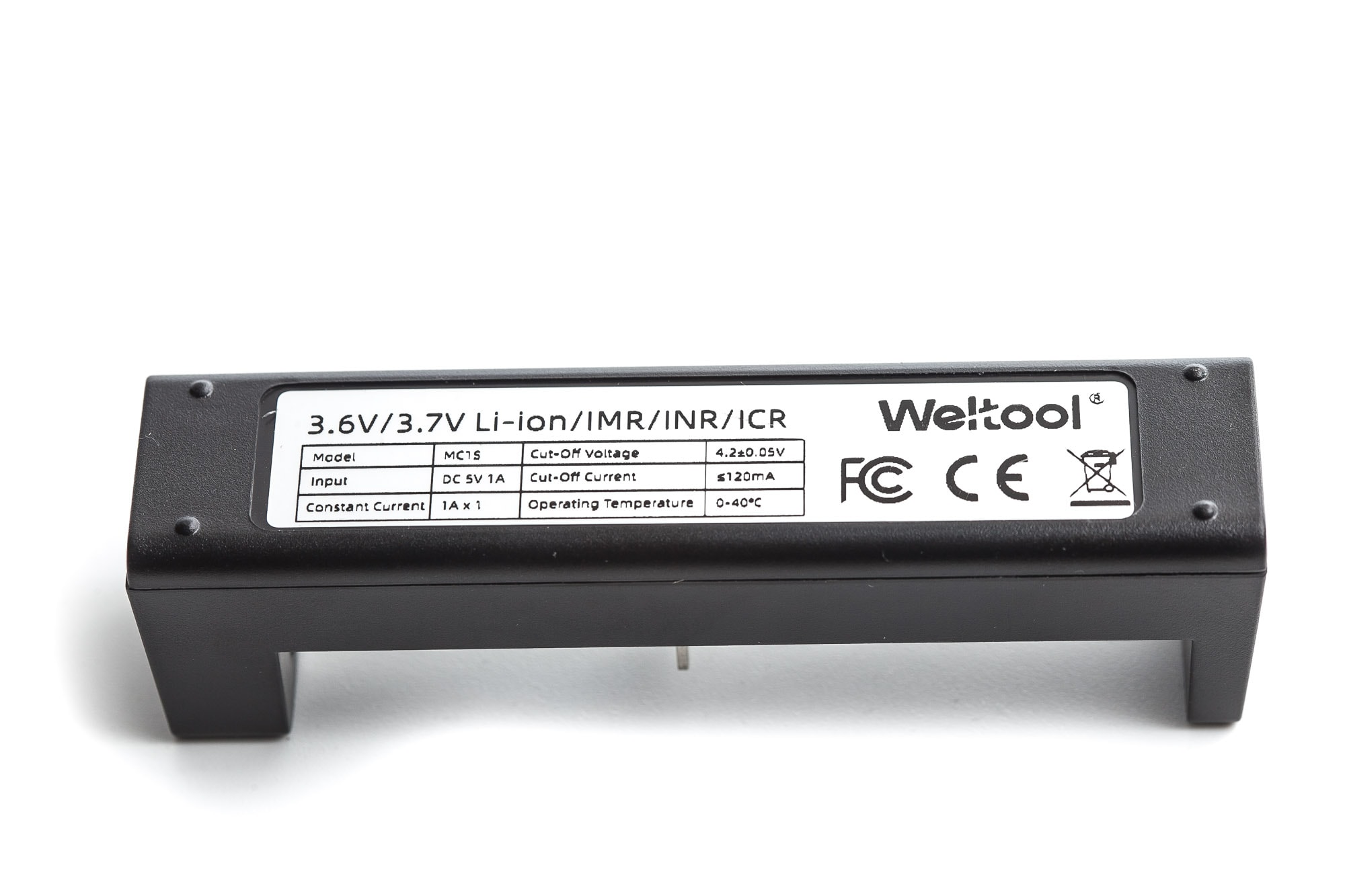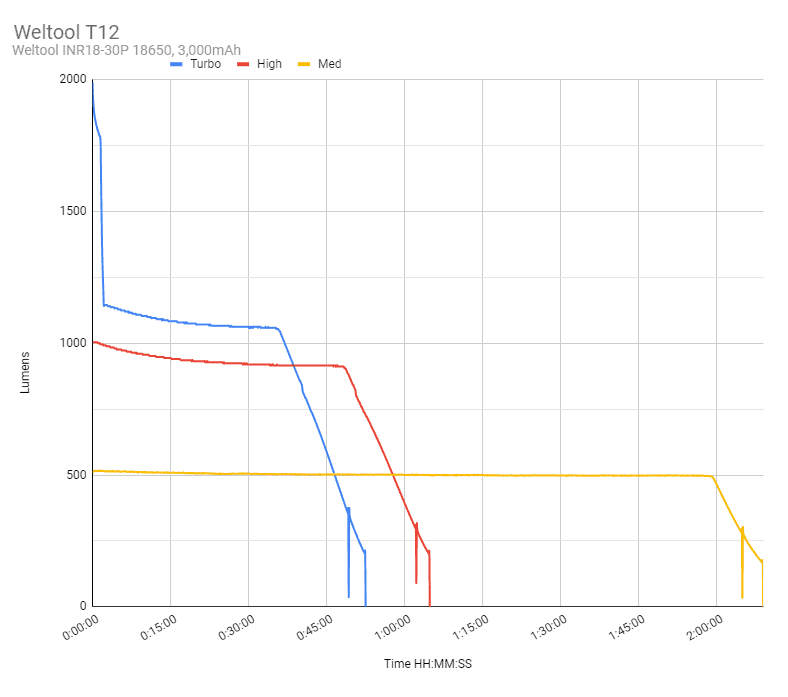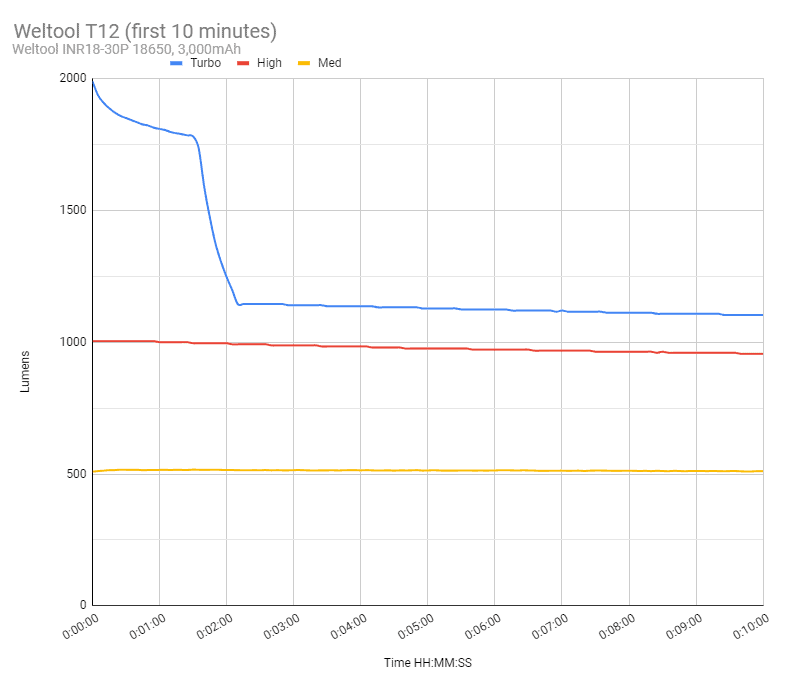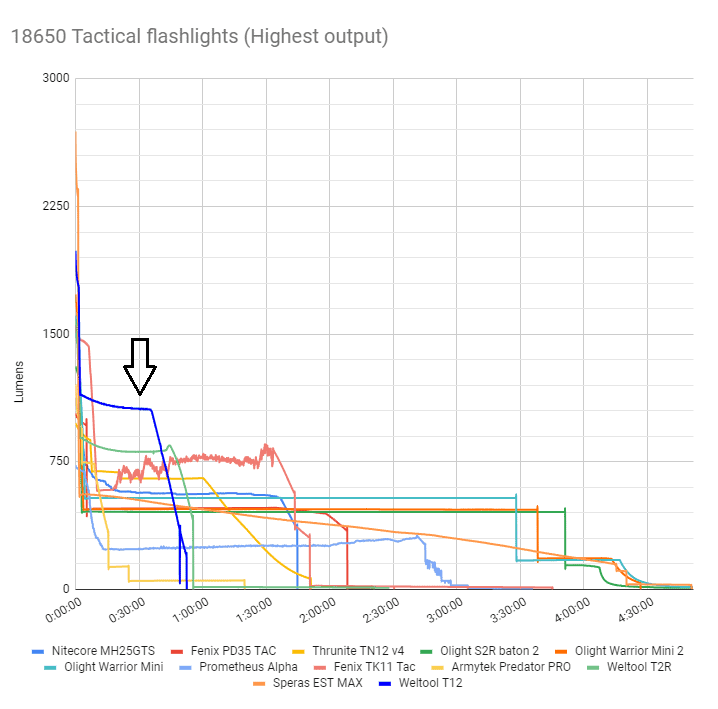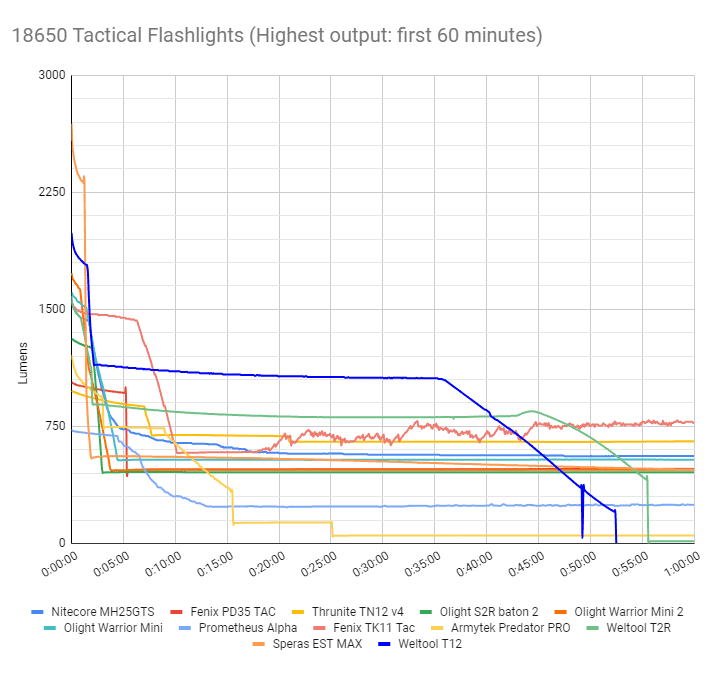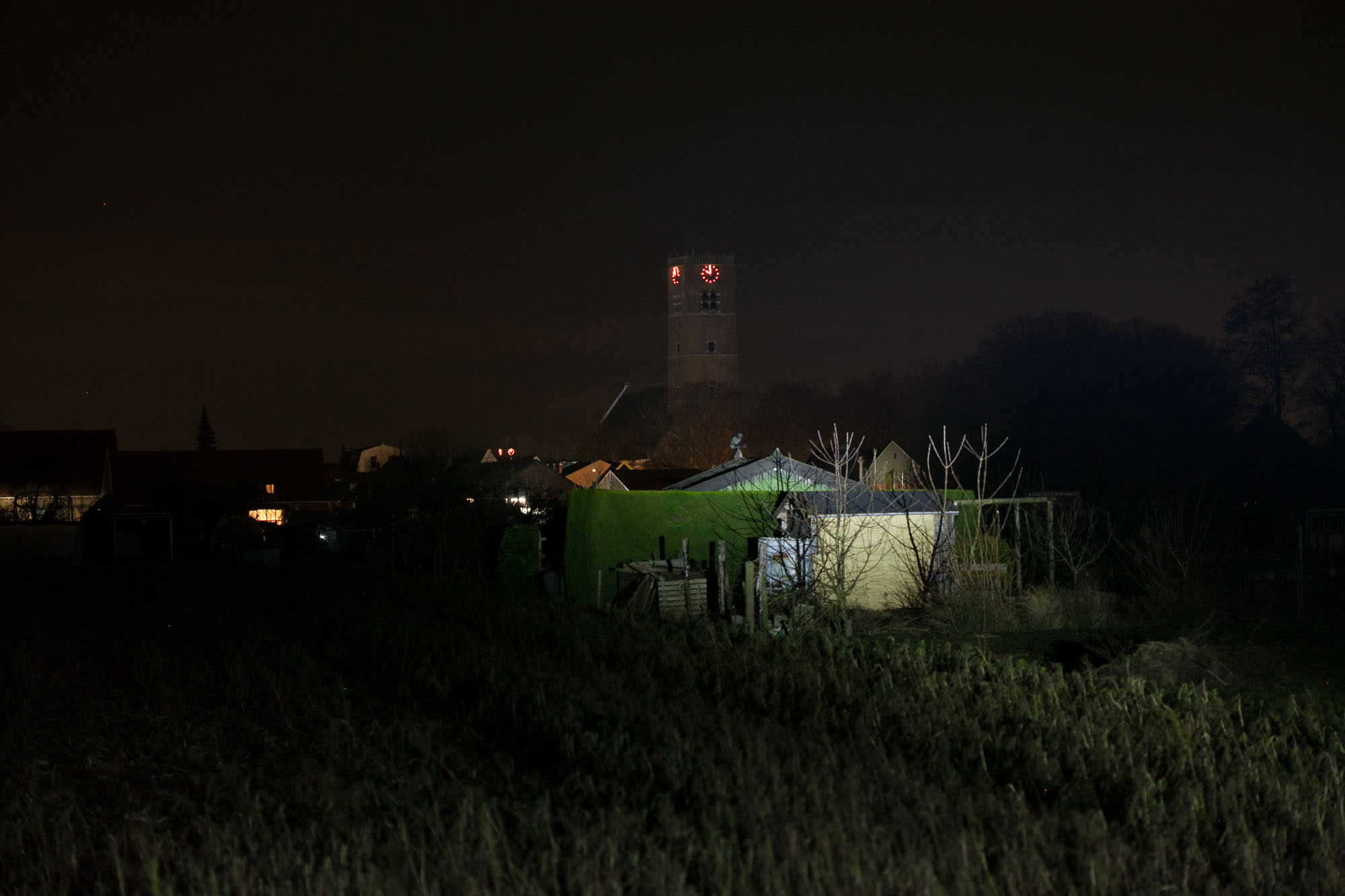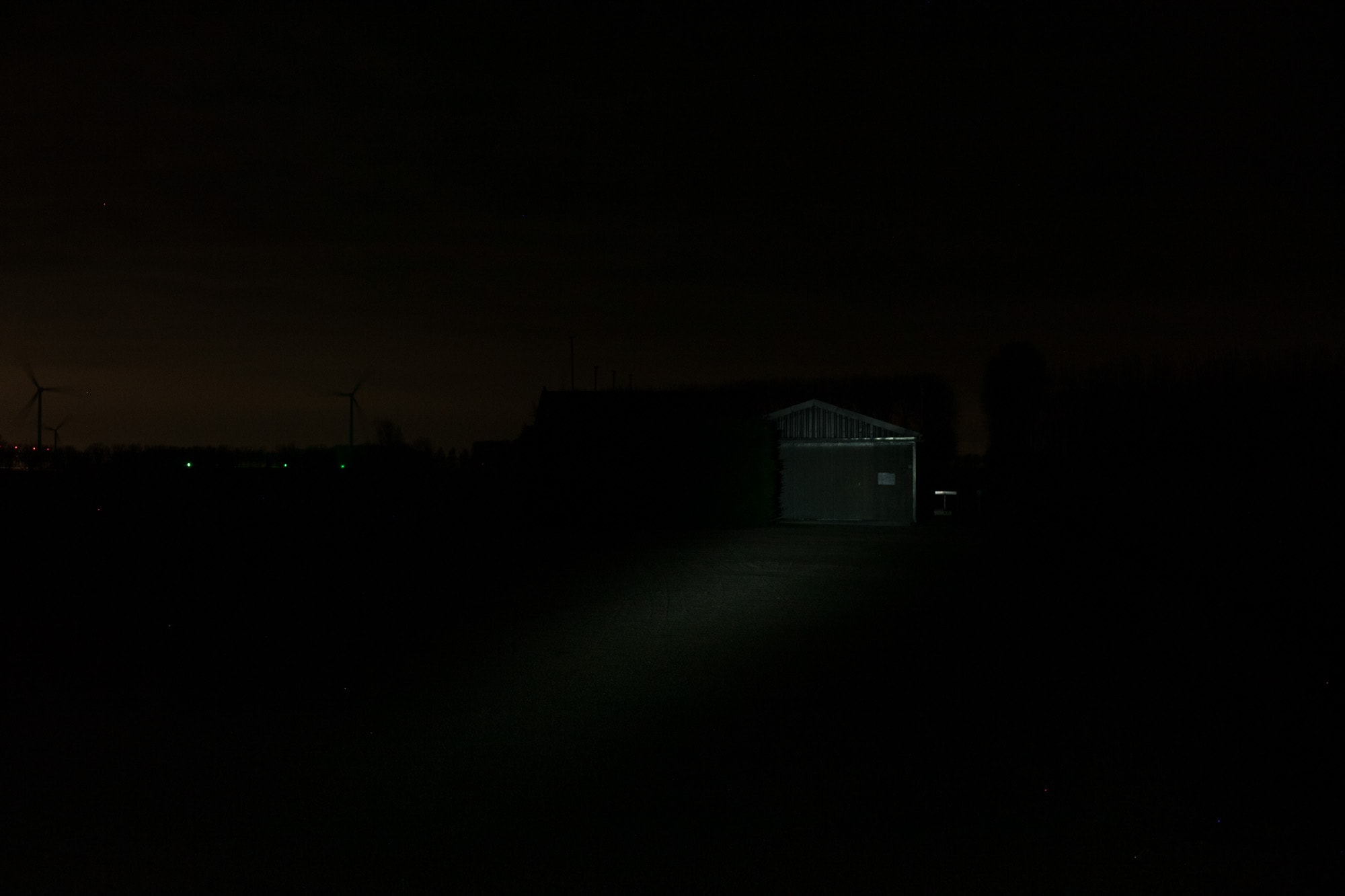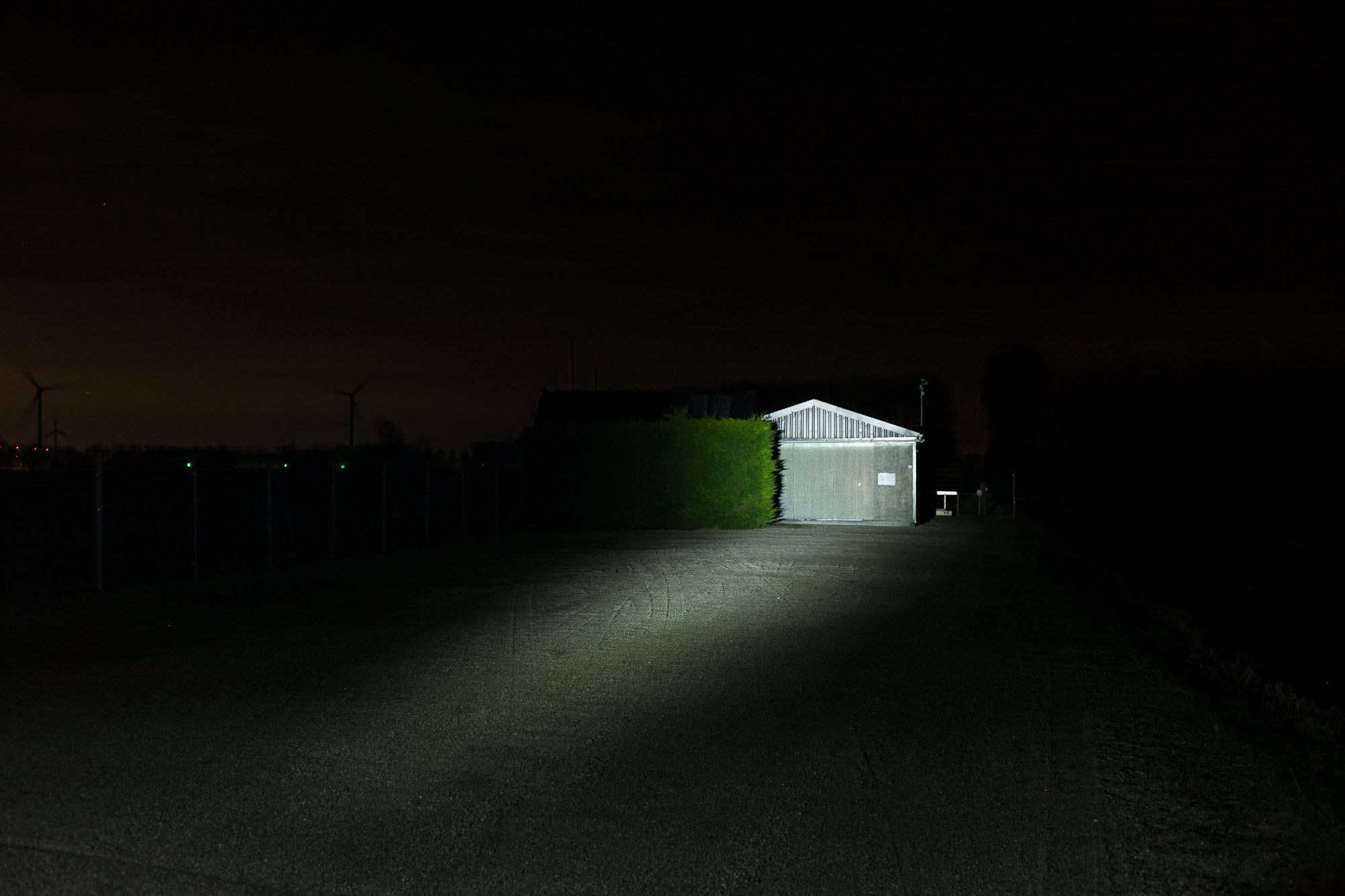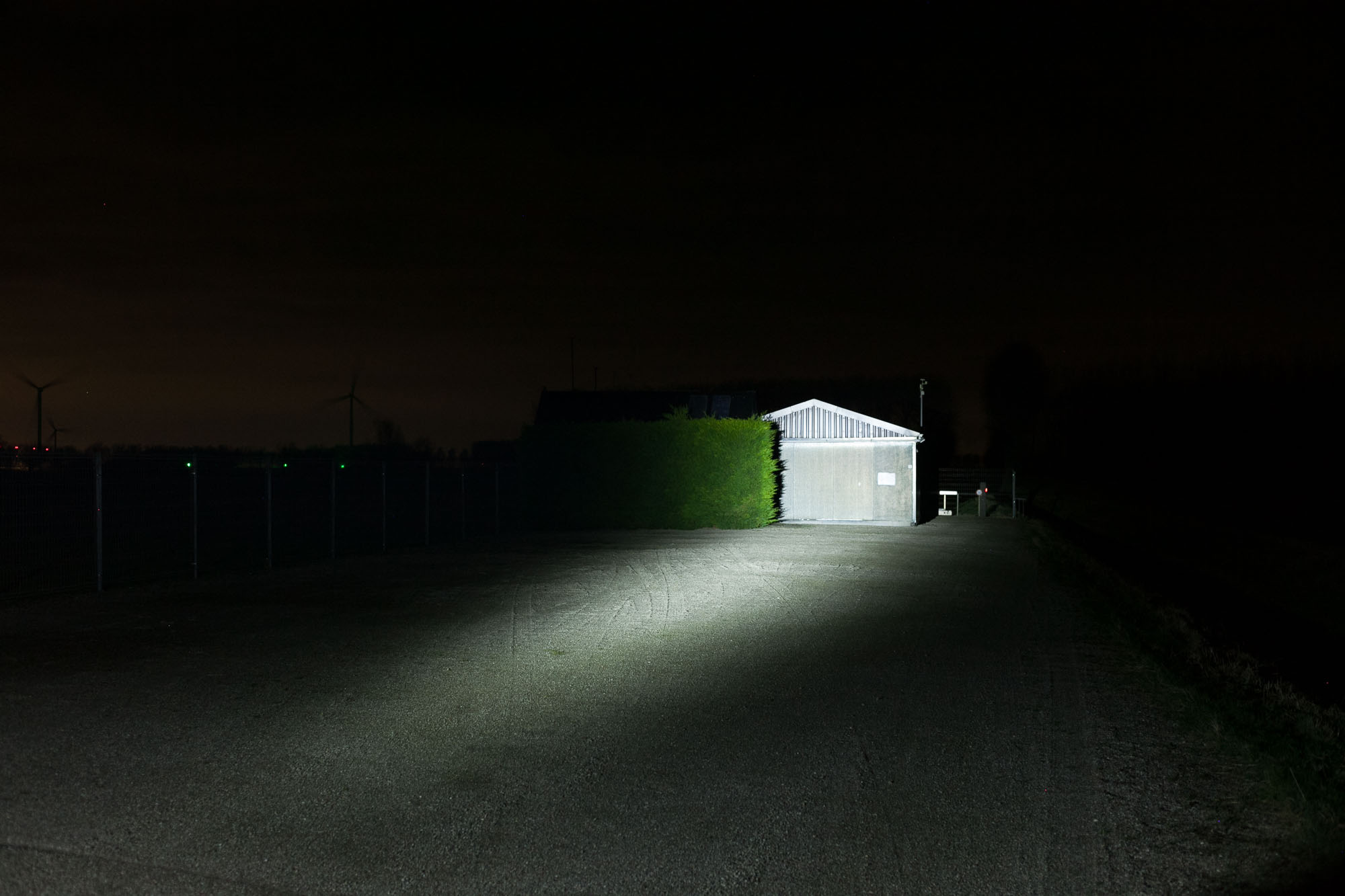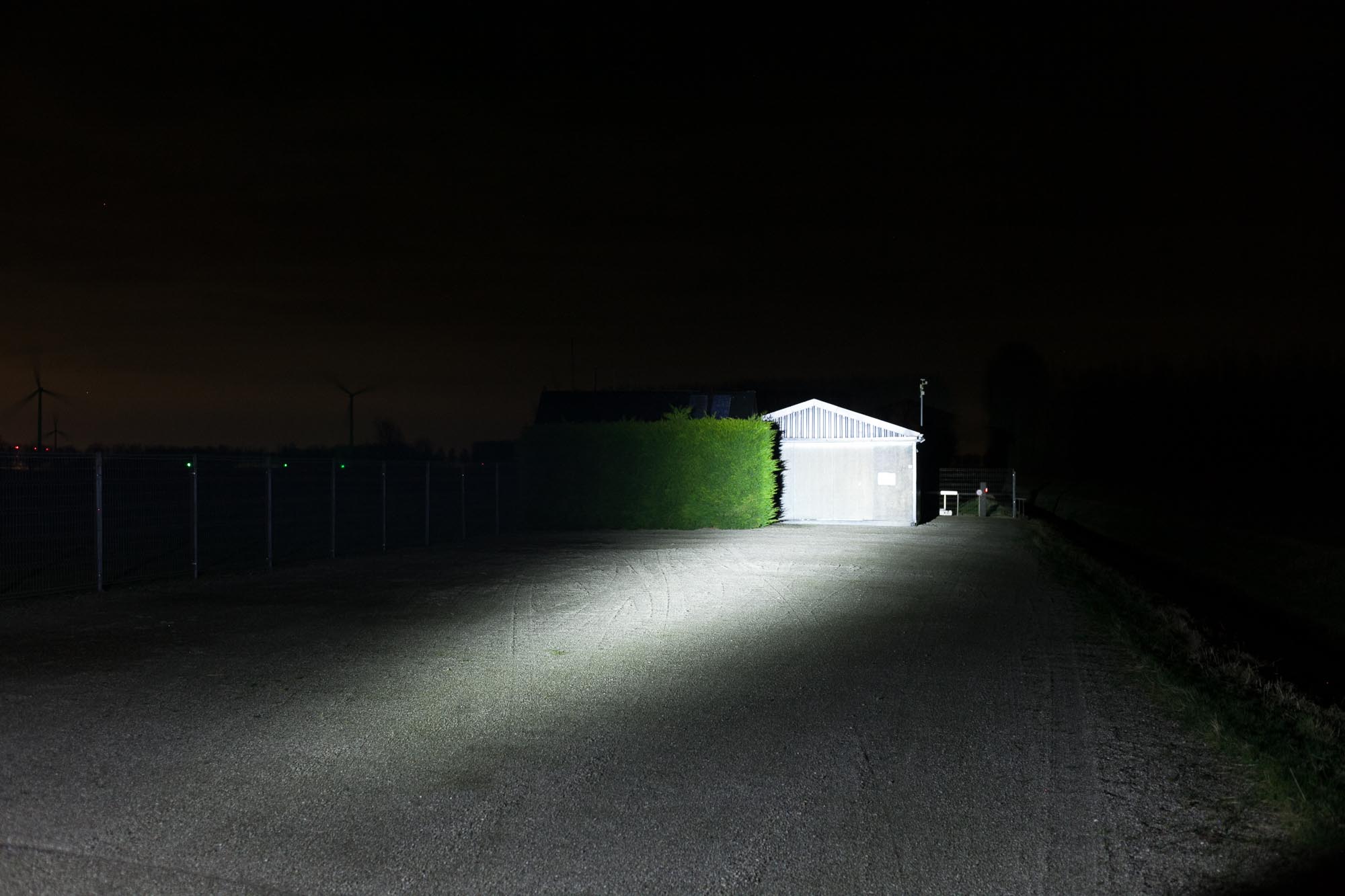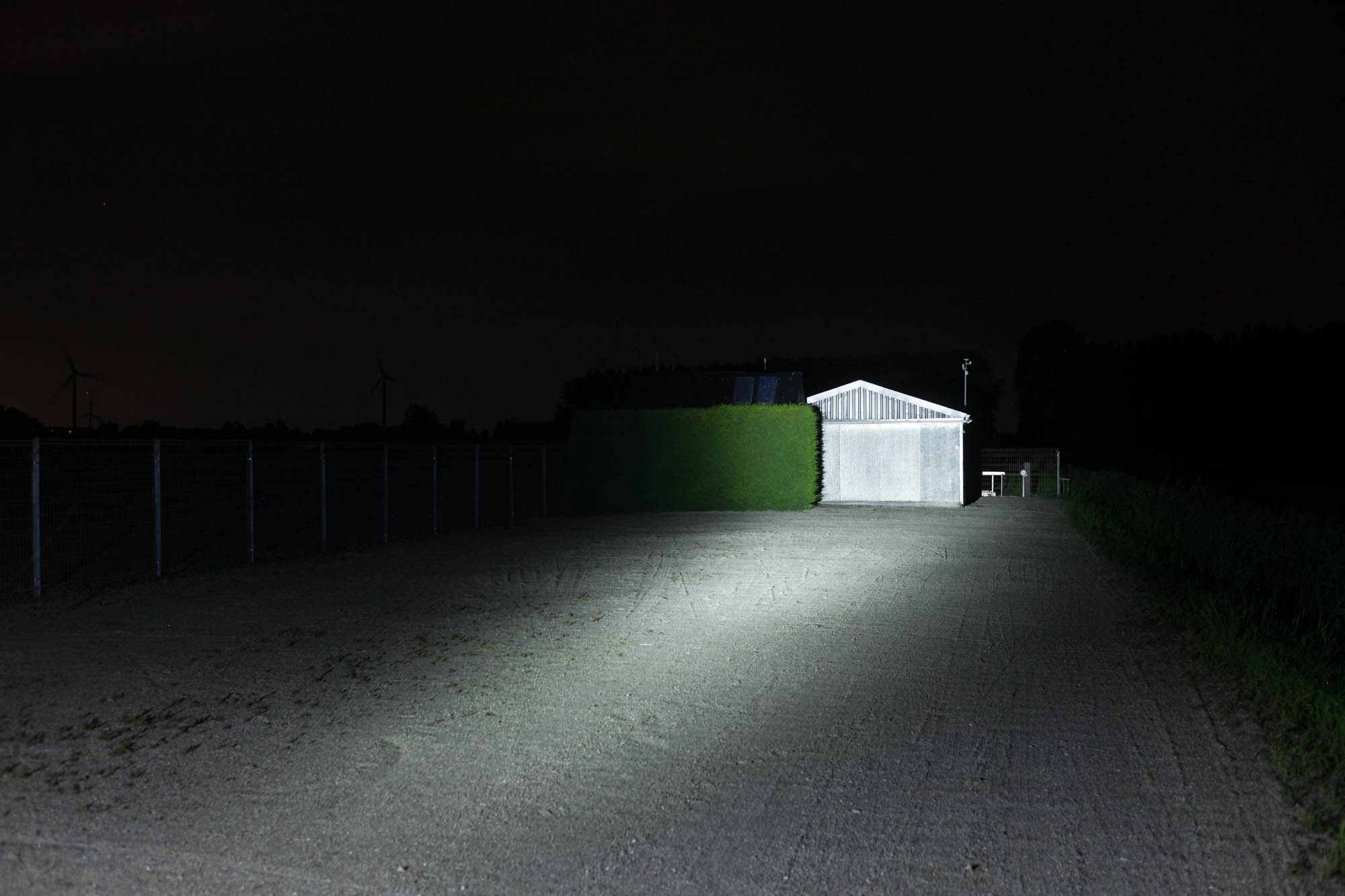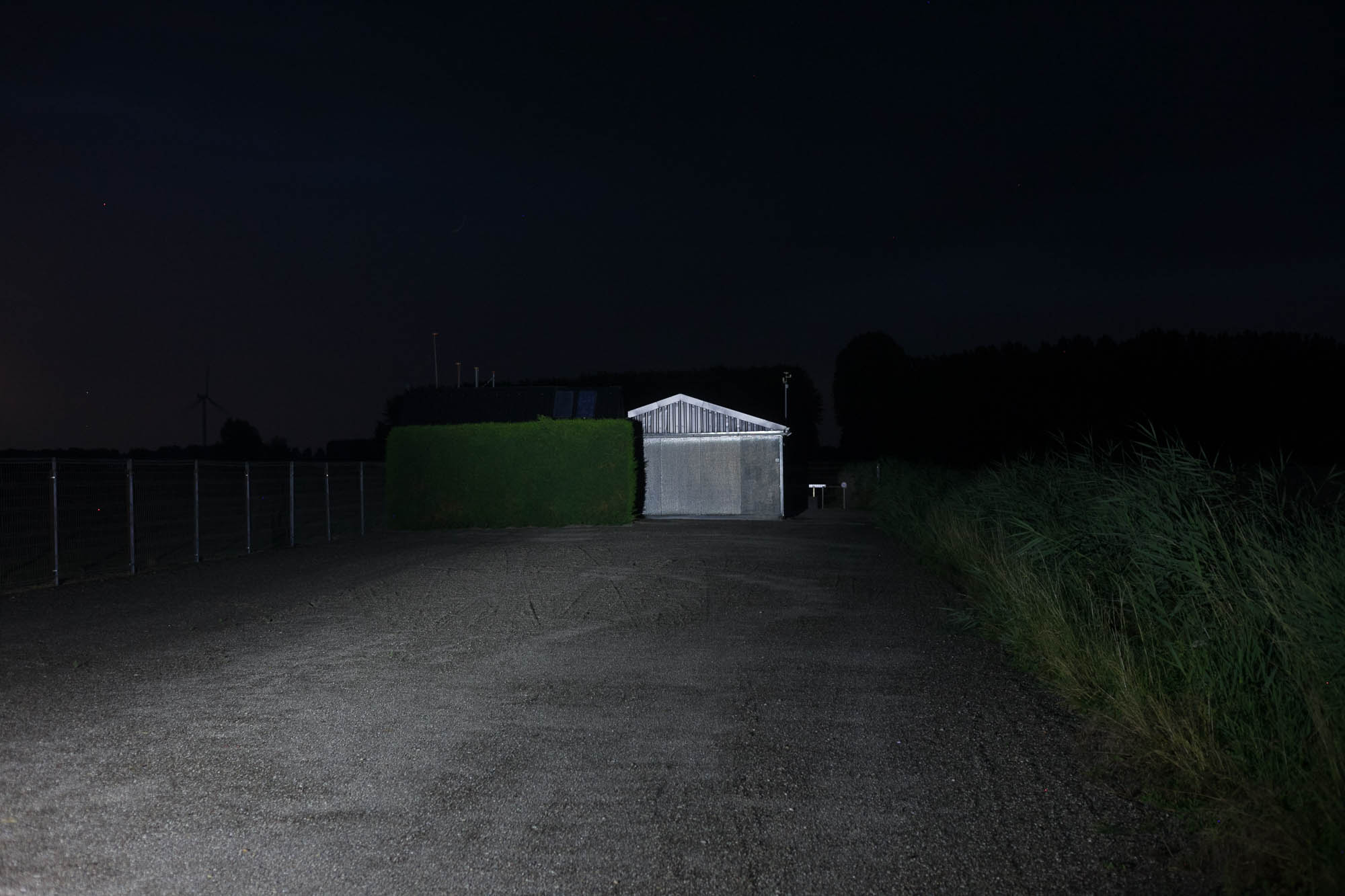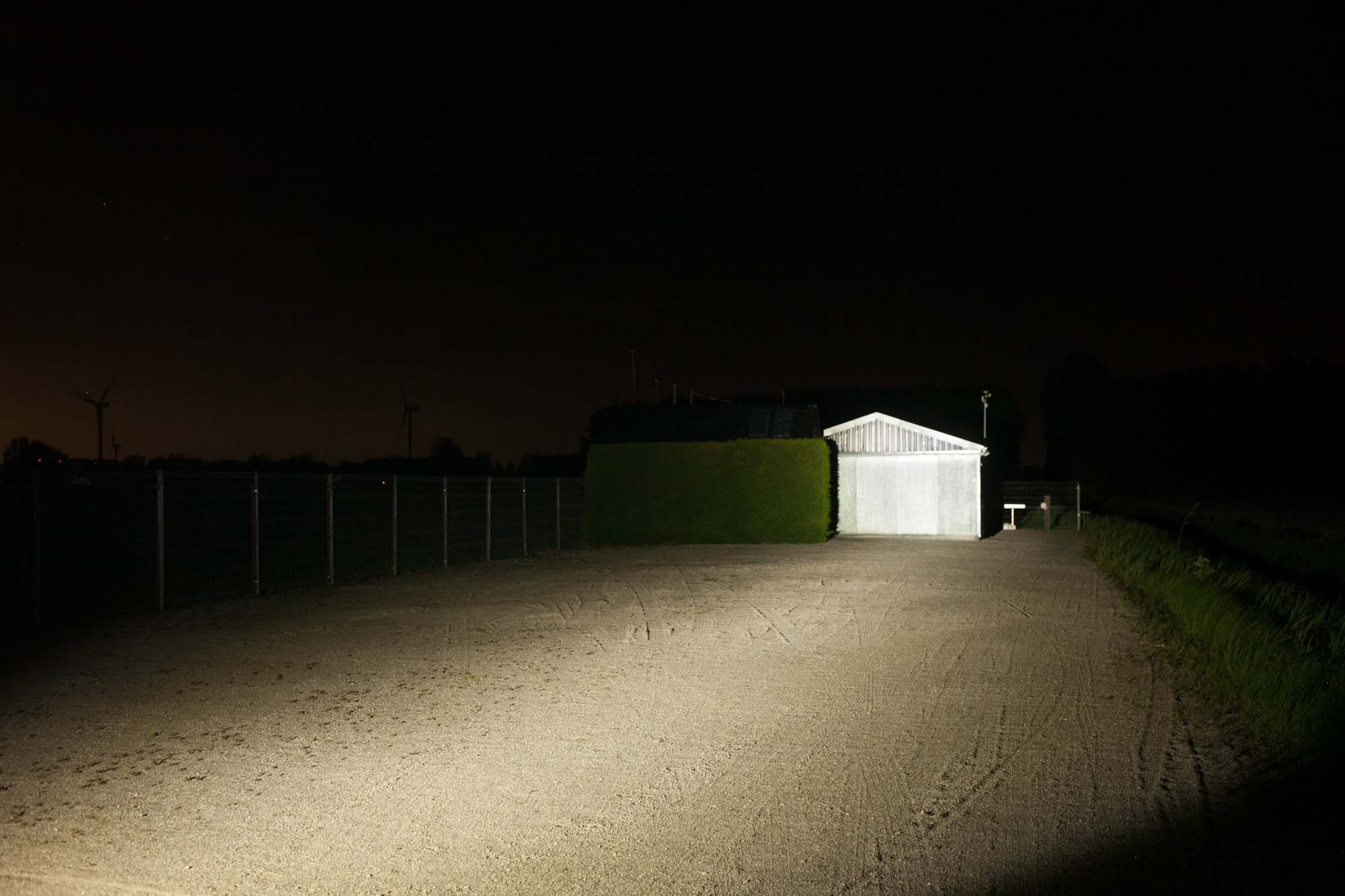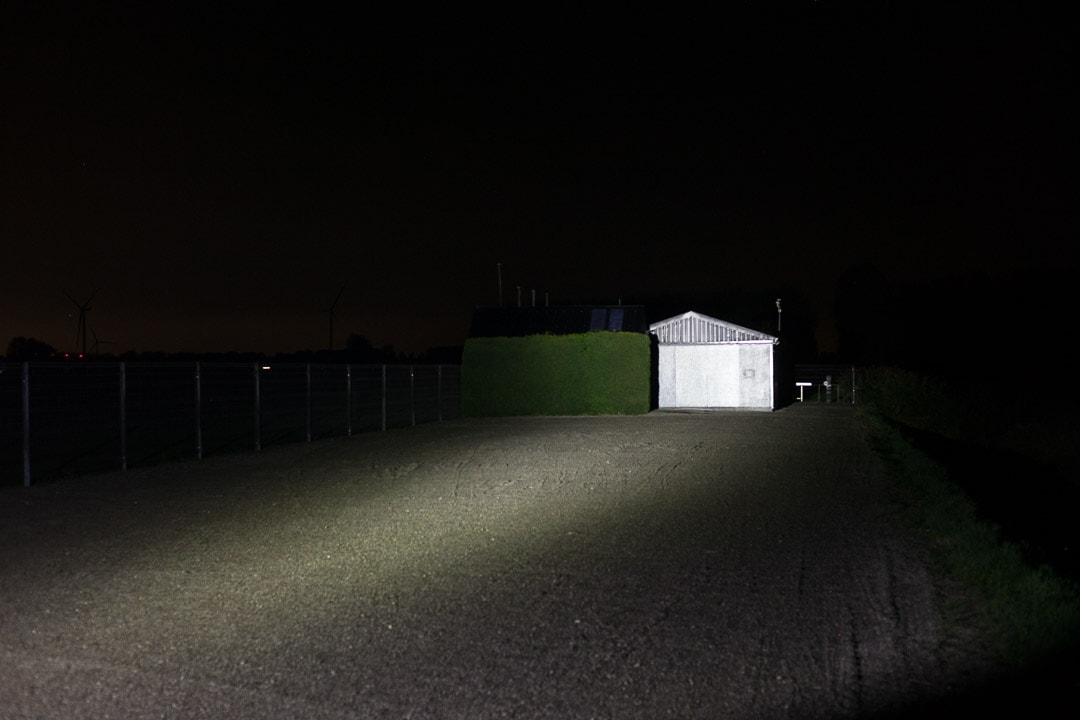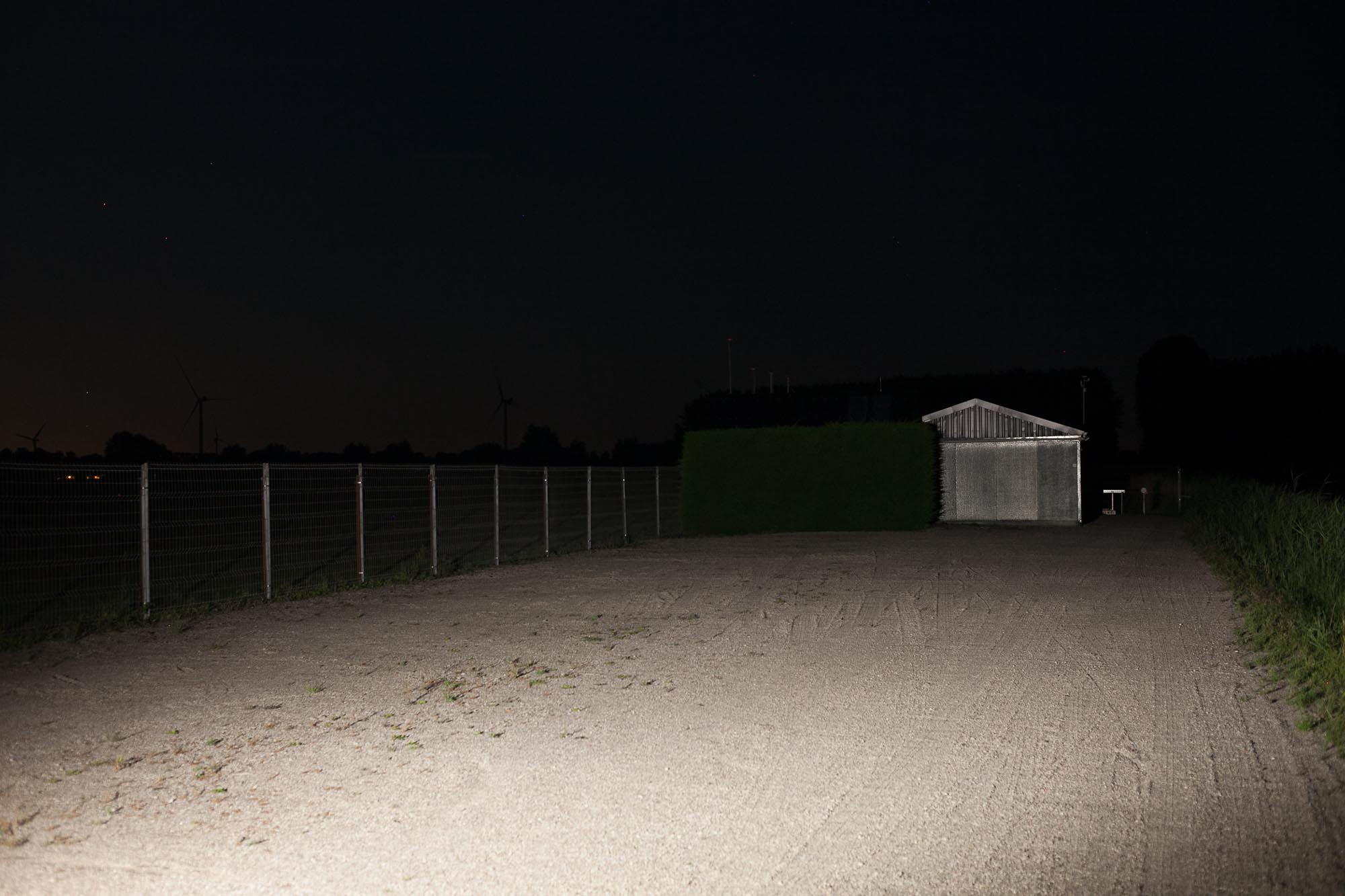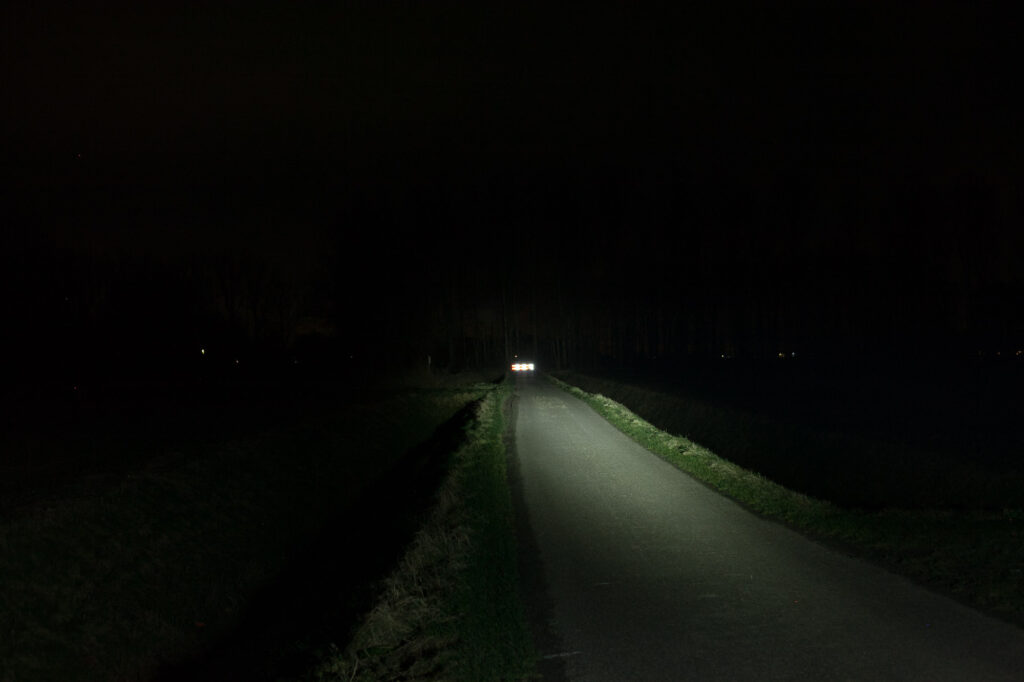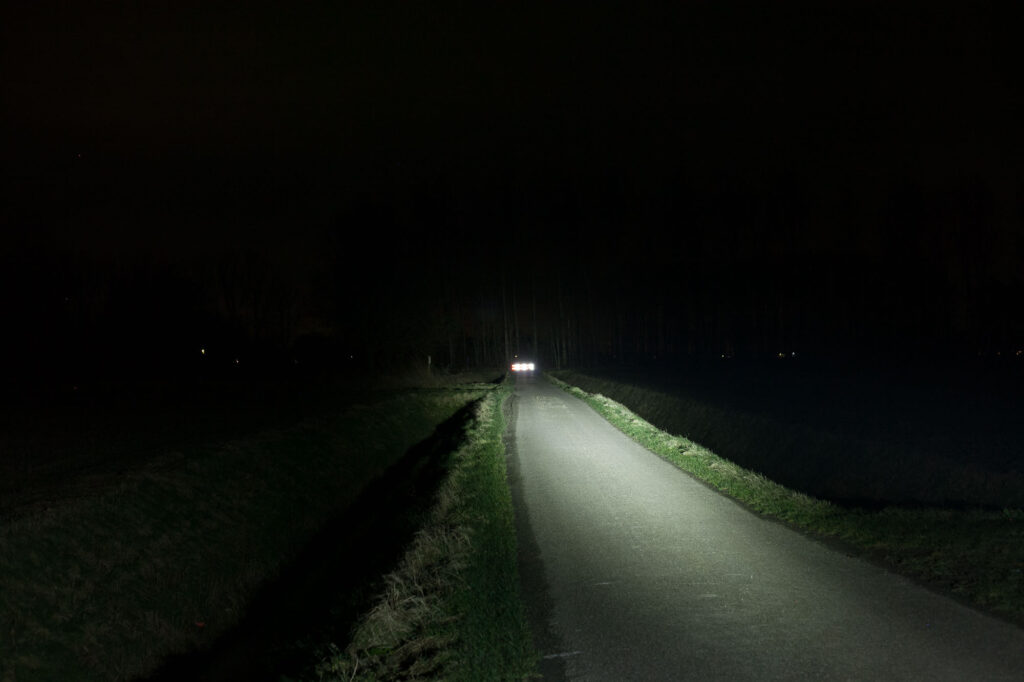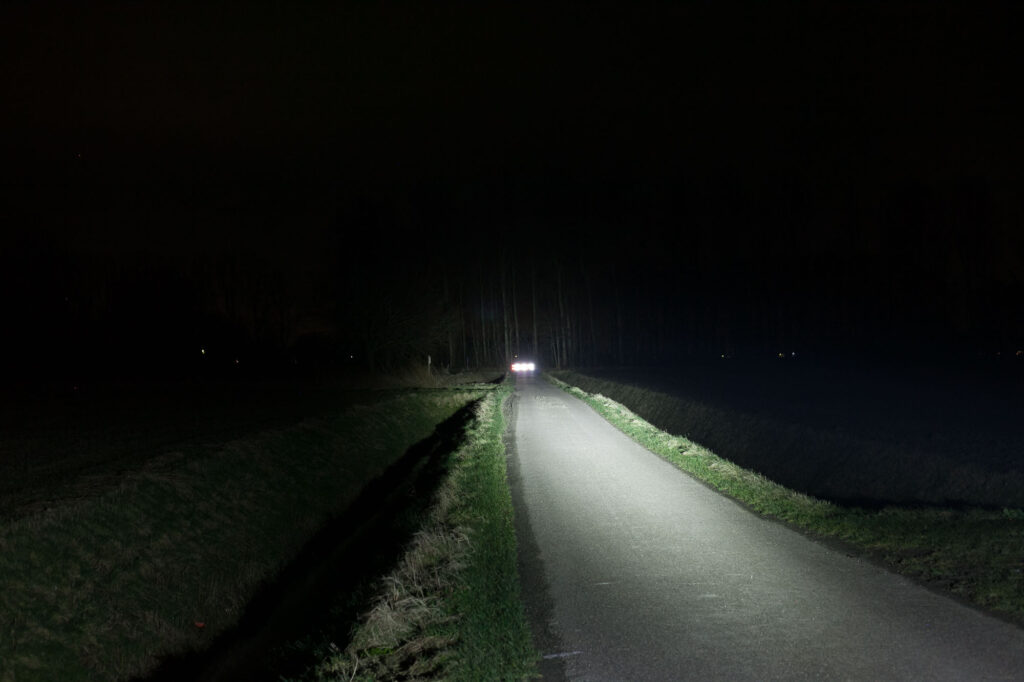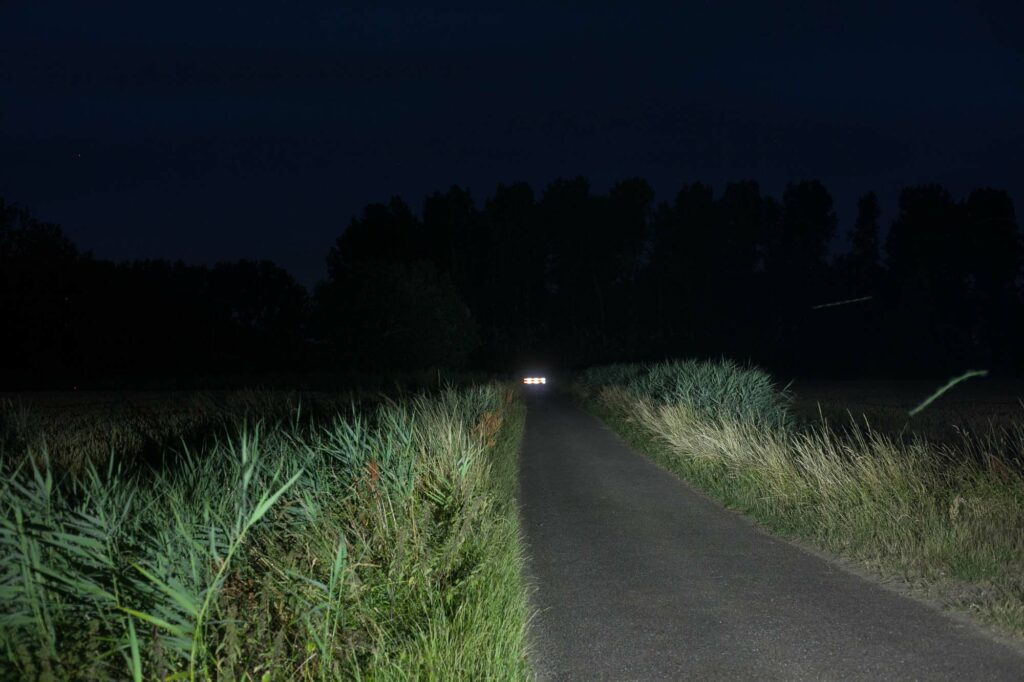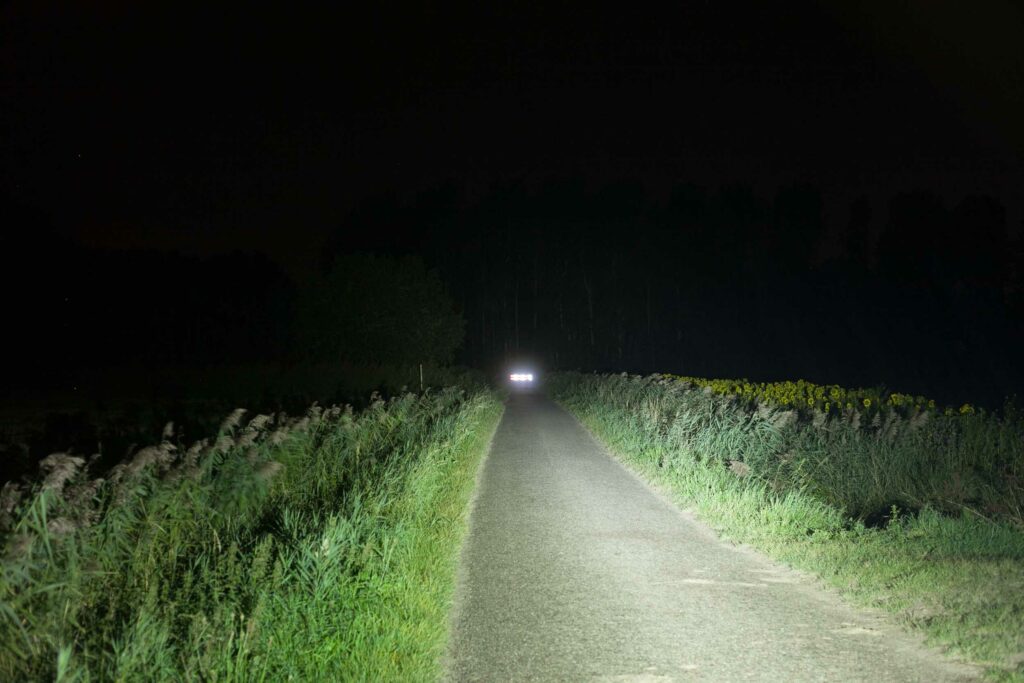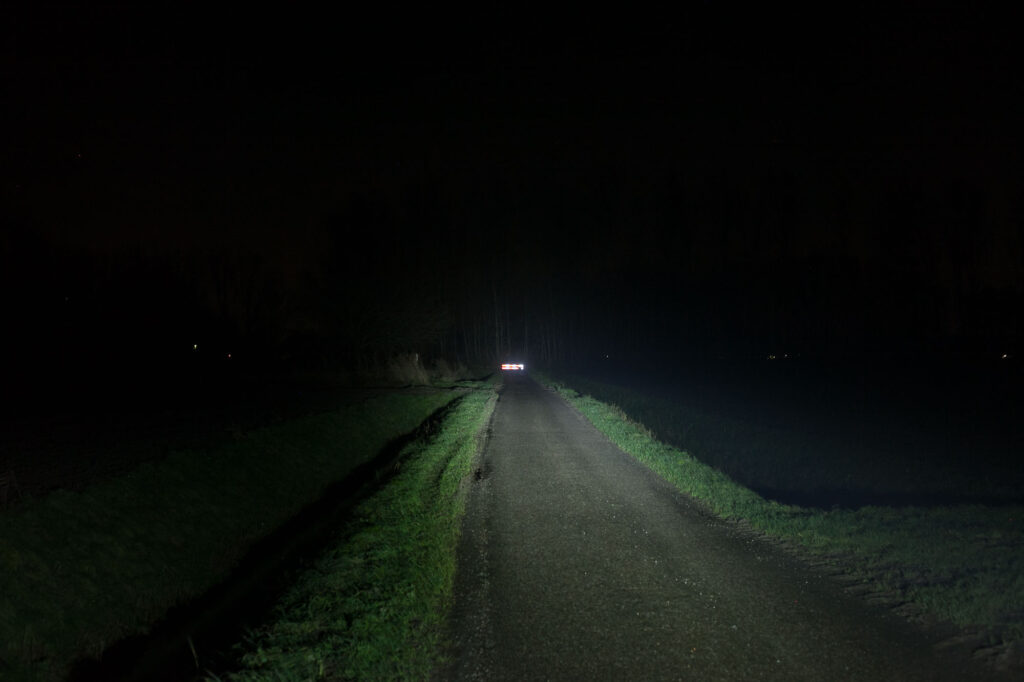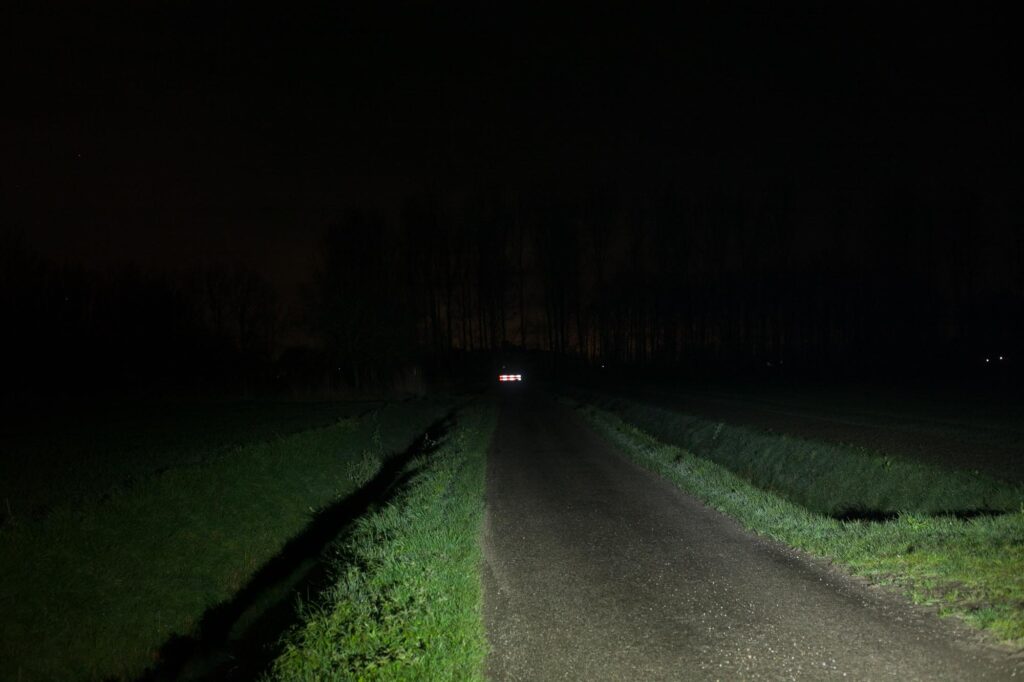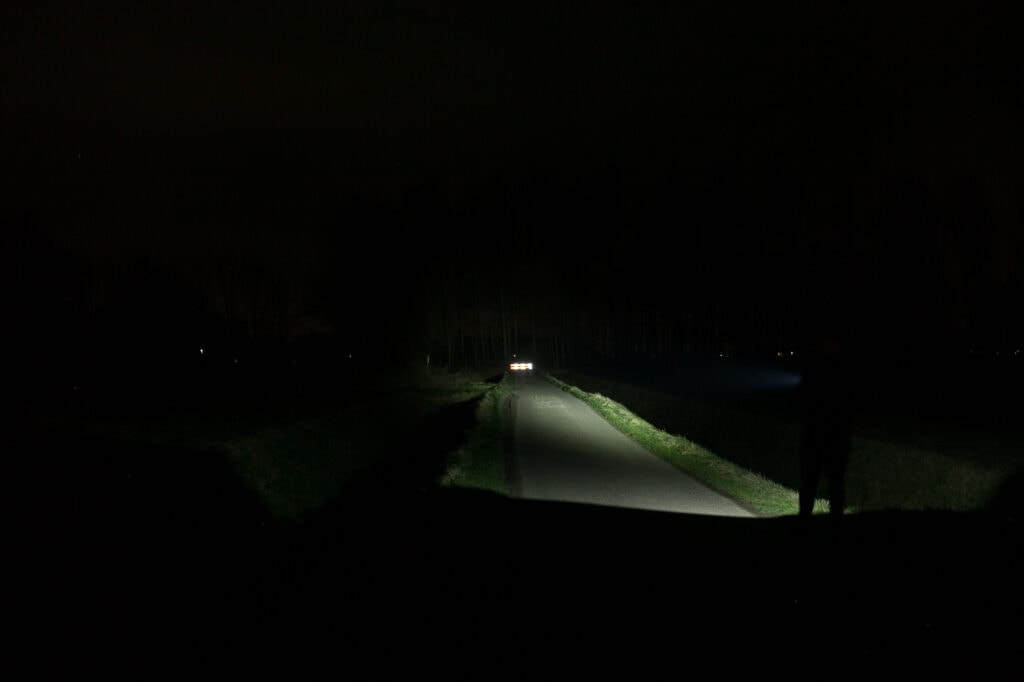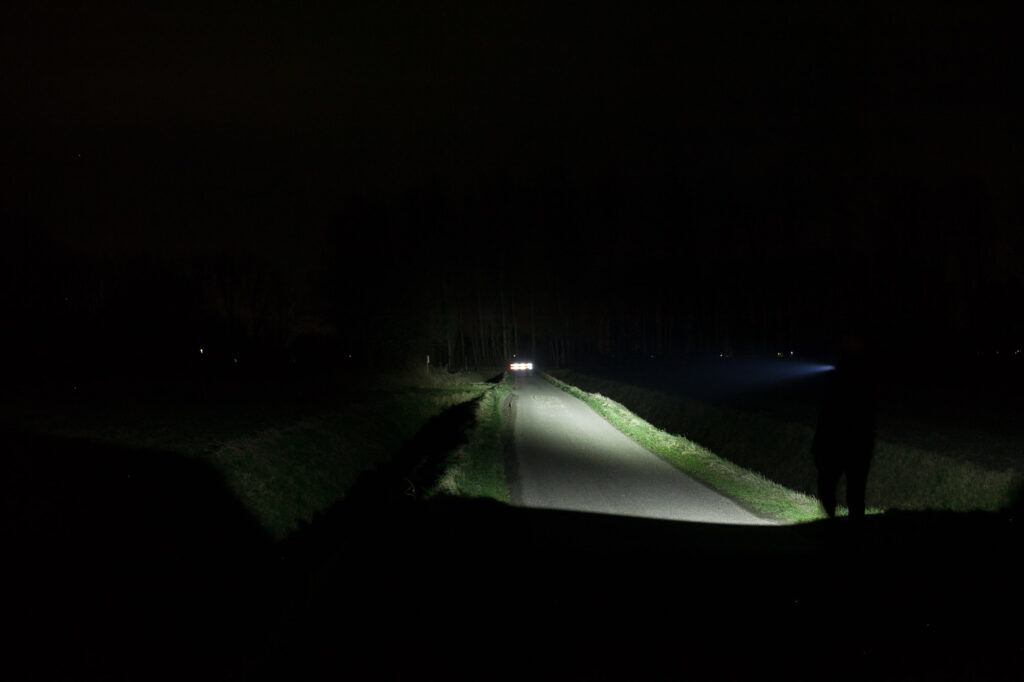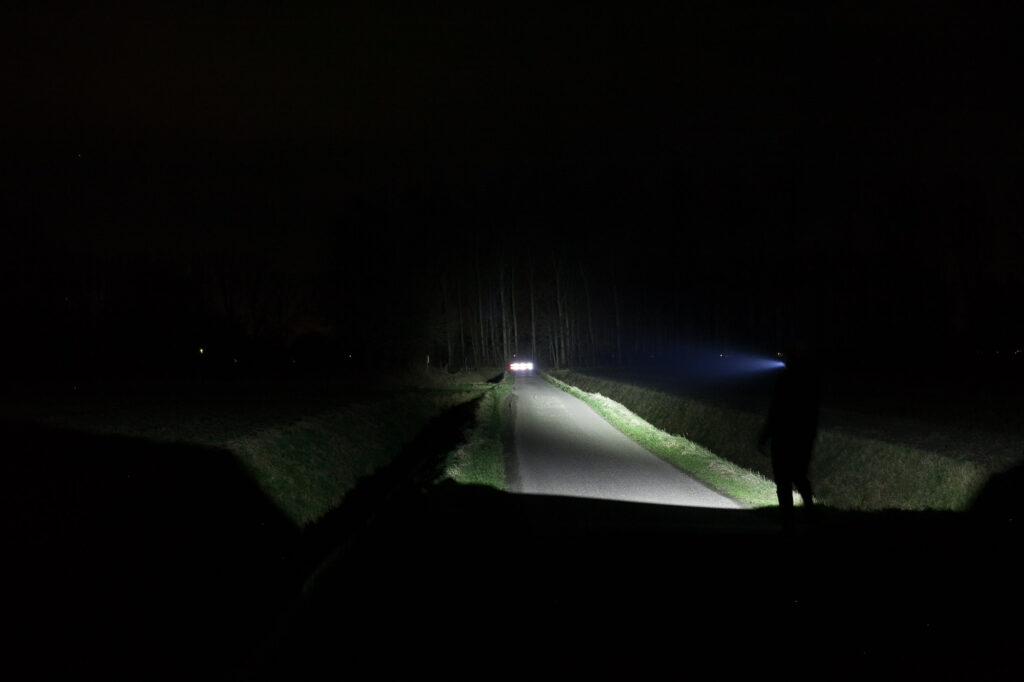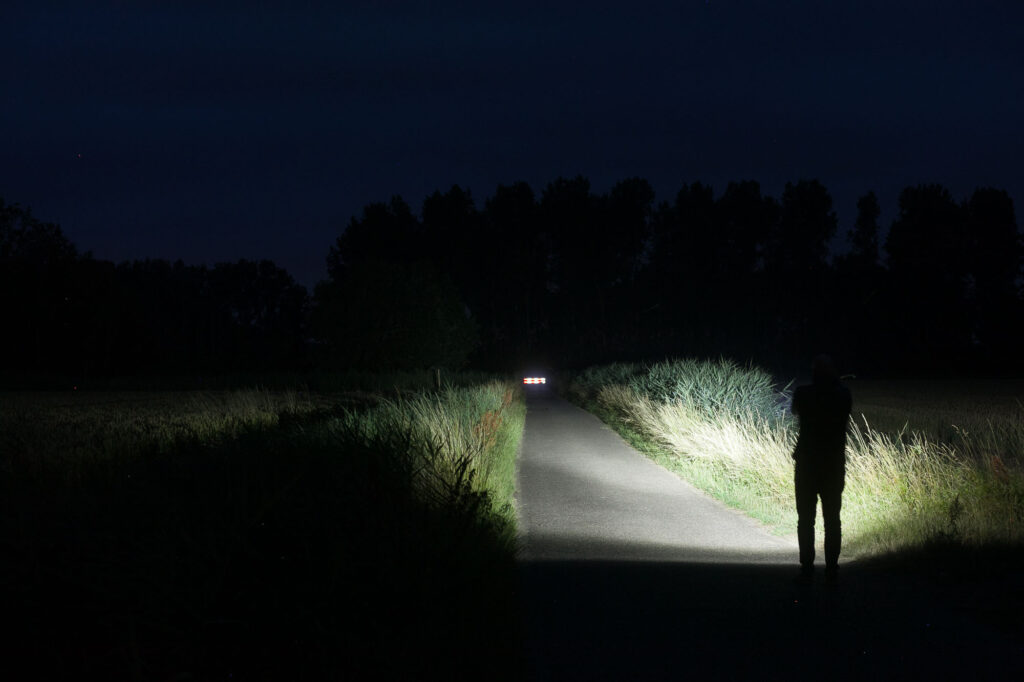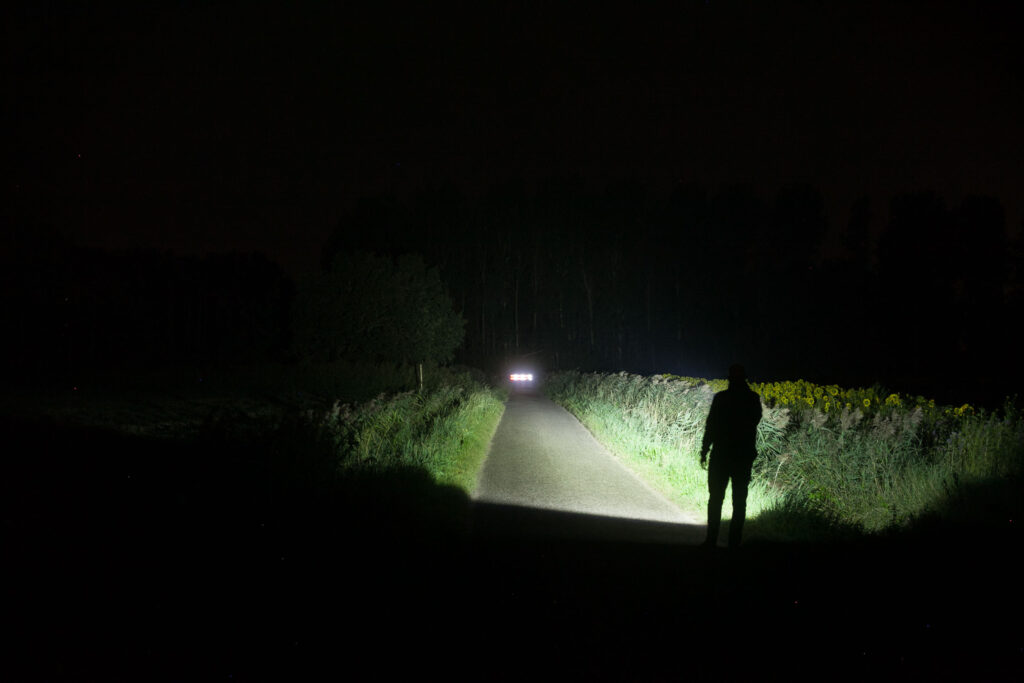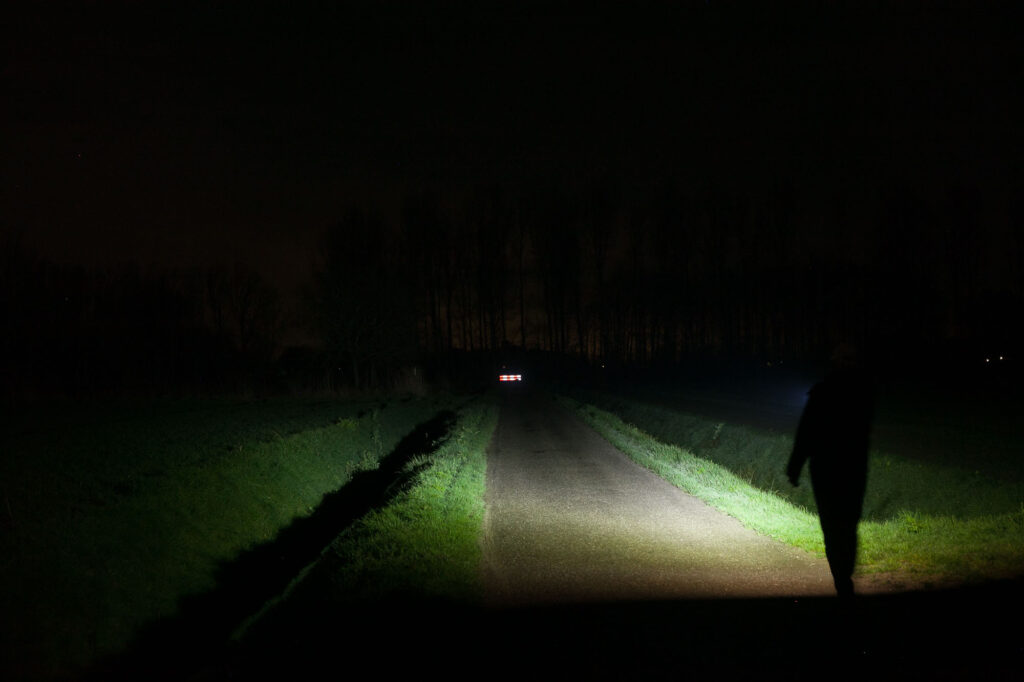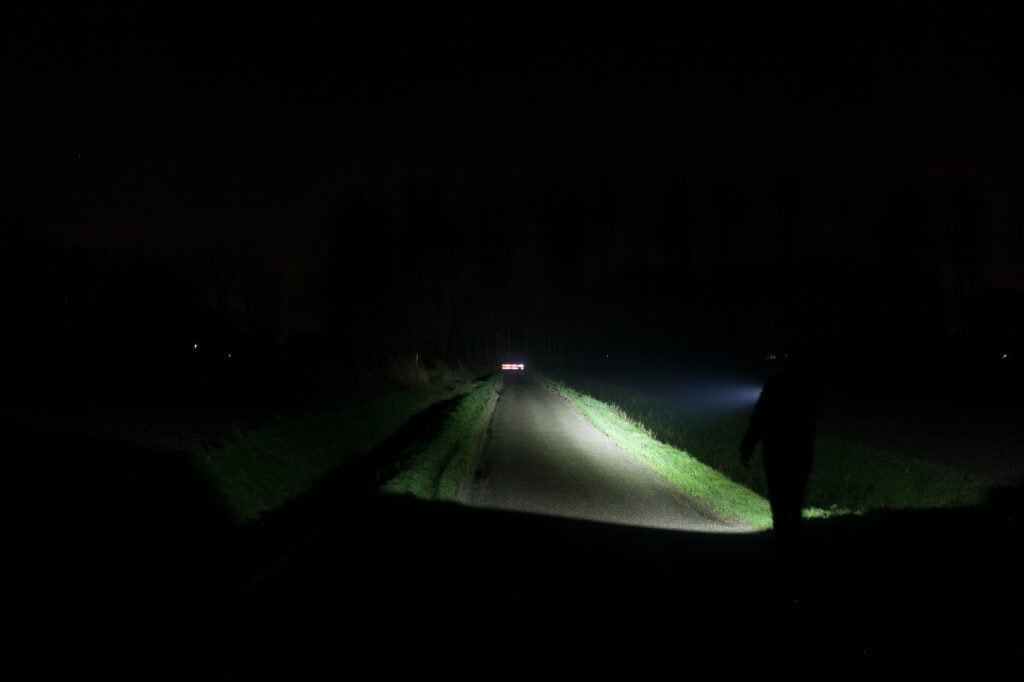1lumen selects and reviews products personally. We may earn affiliate commissions through our links, which help support our testing.
Weltool T12 3TAC review
Weltool T12 specifications
| Brand/model | Weltool T12 |
|---|---|
| Flashlight category | Tactical flashlight |
| LED | High power X-Led |
| Max. output | 2,000 Lumens |
| Max. beam distance | 750 meters |
| Max. beam intensity | 141,000 cd |
| Battery config. | 18650 |
| Onboard charging | N/A |
| Modes | 4 |
| Blinkies | Strobe |
| Waterproof | IP67 |
| Review date | February 2024 |
Review intro:
If you’re into tactical flashlights, you have probably heard of Weltool. If not… you’ll be surprised because they are an established company with many great tactical-style flashlights.
This time we are looking at the Weltool T12 3TAC flashlight, also dubbed as the Nine Dragons. Yeah, I know; Weltool sometimes adds funny nicknames ;–)
So what’s this all about? And why does it have all those holes inside the head?
How does it perform, and is it a real tactical flashlight?
What’s in the package
The packaging of the Weltool T12 looks lke your average Weltool box. The front side of the box displays an image of the flashlight along with its specifications. At the bottom of the box, there is a silver sticker indicating the type of LED, either CW or NW. Inside the box, you can find the following:
- Weltool T12
- Weltool INR18-30P battery (18650 with 3,000mAh)
- Weltool M1Cs battery charger
- USB-C charger cable
- O-ring
- Manual and Certificate of Quality
ps. Don’t forget to remove the plastic insulator in the tailcap before your first use.
Flashlight in use, Build Quality, and Warranty
The build quality of Weltool T12 flashlight is impressive, as expected from the brand. I have never faced any significant issues with my Weltool flashlights.
At first glance, the T12 looks like a 21700 flashlight, but it isn’t. The T12 is a dual-tube design, taking up more space than a normal 18650 flashlight.
One thing that caught my attention was the presence of small holes inside the flashlight, located just below the head. This is a unique feature that I haven’t seen before, and I believe it’s a method for heat dissipation. I’m curious to see if this will have a positive effect on its performance in the runtime tests.
In terms of handling, the T12 tactical flashlight operates like any other flashlight with a rear forward-clicky switch. A forward click on the switch will momentarily turn on the flashlight, while a full click will keep it on continuously. However, the flashlight can change modes when activated due to the secondary tube, which is different from normal forward-clicky designs.
Normally, only reverse clicky-switches can change modes when the flashlight is activated. So that makes the T12 somewhat special.
You can use it in the underhand position, but for tactical use, it’s probably better in the overhand position, with your thumb resting on or near the switch.
The flashlight has no lanyard attachment point as the switch protrudes without any walls or ridges protecting it. You could attach a lanyard to the pocket clip, but that may not be the best option.
Another way of carrying this light is by using the pre-attached pocket clip. The clip is pretty stiff, and you need a lot of force to remove it. And besides the pocket clip, the tailcap is the only other removable part. All other parts seem to be glued.
By default, Weltool does not include a holster, but they provide it as an optional feature and call it the Weltool FH7. Other available accessories for the T12 are a Yellow filter (LF39Y) and a Diffusion filter (LF39).
Regarding use cases, this is geared towards tactical use, duty, and first responders.
The threads are anodized and protected by two o-rings. This will definitely help to keep water out, but the IP rating is ‘only’ IP67.
Weltool’s warranty, according to their website:
From the date of sale (the serial number on the Lights body can show the date), the limited warranty for LED products is 5 years, and the warranty for LEP products is 2 years.
The above free warranty does not cover any damages or failure caused by:
- Problems caused by alteration, misuse, abuse, or unreasonable
- Battery leakage , improper operation or using poor quality battery
- The products do not purchase from Weltool directly or its authorized dealers or other illegal way
- Broken lens caused by external force
- Lamp, switch runs out of its lifespan
- rubber cap, O ring’s naturally aging
- normal wear and tea, imprinting, or color finishes
- Other problems caused by improper operation
- Discontinued products
LED, Lens, Bezel, Beam, and Reflector
The T12 can be had with two emitters: Cool white (6500K) and Neutral white (5000K). The one I am reviewing is the cool white 6500K version.
Weltool does not specify the LED used, instead referring to it as a high-power X LED. It is apparent to the trained eye that they are utilizing the Luminus SFT40 LED. This non-domed LED combines high output with long distance.
Not mentioning the LED is probably because they can change the LED without changing the name or specifications. I heard this from the manufacturers, so they can keep selling their lights for years to come, without having to rely on the exact LEDs they originally used. This is likely a pretty common thing for big manufacturers. Ones an LED becomes obsolete, they don’t need to change the specifications.
The LED is centered perfectly in a smooth reflector and protected with a green AR-coated lens. A slightly crenelated black bezel then protects this. I’m not 100% sure, but it does look like an average aluminum bezel instead of stainless steel.
The beam itself is throwy, but still with lots of useful spill. It’s definitely not a pencil beam.
Anyway, it’s time to do some measurements.
Spectral measurements:
I used a Sekonic C800 spectrometer to measure the flashlight at about 5 meters distance.
| Mode: | CCT: | CRI Ra: | duv |
|---|---|---|---|
| Turbo (full power) | 7690K | 69.7 | -0.0025 |
| Low | 6133K | 70.0 | 0.0128 |
This is quite interesting and a huge shift in color temperature. It goes from 6133K to 7690K, and from -0.0025 to 0.128duv. This means that the higher the output, the cooler the beam. And the higher the output, the less ‘greenish’ the beam becomes.
Dimensions and its competition
Dimensions:
| Weltool T12 | Millimeters | Inches |
|---|---|---|
| Length | 152 mm | 6 in |
| Head diameter | 39 mm | 1.5 in |
| Tailcap diameter | 32 mm | 1.3 in |
| Body diameter | 27 mm | 1 in |
Dimensions are rounded to the nearest millimeter and the nearest tenth of an Inch.
Weight:
| Weltool T12 | Weight in grams | Weight in oz. |
|---|---|---|
| Without battery: | 175 g | 5.6 oz |
| With battery | 222 g | 7.14 oz |
Weight is rounded to the nearest gram and tenth of an Oz.
Weltool T12 Flashlight comparison
Group 1, from left to right: Weltool flashlights: Weltool T11, Weltool W3 Pro Tac, Weltool W3 Pro, Weltool T12, Weltool W2, Weltool T1 Pro
Group 2, Tactical flashlights from left to right: Nitecore MH25 v2, Weltool T12, Fenix TK22 Tac, NEXTORCH TA30 MAX, Speras Est Max, Weltool T2R, Olight Warrior X3.
Weltool T12 UI : User interface and driver
I haven’t experienced this UI before, and it took a bit before I could make sense of it. But it’s not as difficult as it may seem. There are three different UIs, hence the name 3TAC…
Also, Weltool calls the highest output mode: Full Power.. I will call it Turbo for now.
How do you change the mode group on the Weltool T12 3TAC?
To select a different mode group, you must half-press the switch 9 times. The flashlight will start blinking in 3 different ways to show you are in the mode configuration. The first few blinks in high output will indicate Mode Group A, the second set of blinks in low output will indicate Mode Group B, and the third set of flashes (not blinking) will indicate Mode Group C. To activate a specific group, you have to click the switch fully.
To remember the groups, you can think of the first continuous mode of each group.
The available main mode groups:
- A menu: Turbo (momentary), High, Low
- B menu: Low (momentary), Turbo, Medium
- C menu: Turbo (momentary), Strobe, High
The available special modes (blinkies):
- Strobe, but only available in C menu
How the UI works when the flashlight is still turned OFF:
A menu from OFF:
- Half-press: Turbo mode, momentary
- Single click: High
B menu from OFF:
- Half-press: Low mode, momentary
- Single click: Turbo
C menu from OFF:
- Half-press: Turbo mode, momentary
- Single click: Strobe
How the UI works when the flashlight is turned ON:
A menu from ON:
- Half-press: switch between High and Low
- Single-click: turns off
B menu from ON
- Half-press: switch between Turbo and Medium
- Single-click: turns off
C menu from ON
- Half-press: switch between Strobe and High
- Single-click: turns off
Shortcuts within the UI:
- See modes menus. Half press is different from full click.
Mode memory:
- N/A, A half press and single click depend on the selected mode menu
Blinky modes:
- Strobe is only part of the C menu, a full click will turn on Strobe
Low battery warning:
- The flashlight blinks when the battery is low, about 3-4 minutes before it turns off. This will give you enough time to replace the battery.
Lock-out mode:
- None, you have to use the mechanical switch to turn the light off.
PWM:
- Not that I can see by eye.
Firmware / UI Conclusion:
- What I like about the hidden modes is that you can still do morse coding without activating the menu configuration.
- Since Weltool is a very dedicated flashlight maker for tactical use, they must have thought these menus through, unlike other brands. So, each menu might have a specific tactical-use case in mind.
Weltool T12 charging and batteries
Weltool added a Weltool INR18-30P battery into their package, an 18650-type lithium-ion battery with a 3,000mAh capacity. It arrived with a resting voltage of 3.56V. Note: You need to remove the insulator from the tailcap to be able to use the flashlight.
If you already own a bunch of 18650 batteries, you shouldn’t worry. The T12 accepts all kinds of batteries, from short unprotected flat tops, to long button top 18650’s with USB ports.
Weltool added the Weltool MC1S battery charger. This is a single-bay charger for all kinds of batteries, ranging from short 16340 to 21700 batteries. However, it is important to note that it’s not recommended for protected 20700 or 21700 batteries.
During charging, there is a solid red light. My USB tester showed a 0.92 A charging current and roughly 5V, making it about 4.7 watts of charging. That is not really fast, but also not too slow. For 18650 batteries, this is just fine.
A full charge took 3 hours and 39 minutes, and the end voltage was 4.20V.
| Charge type | Flashlight fits | No fit | Charge time |
|---|---|---|---|
| MC1s charger included | All 18650 | – | 3h 39min |
Performance test
This is the gear I use for testing:
| Gear | Purpose | Link to buy |
|---|---|---|
| Hagner E4-X | Measuring beam intensity (throw) | Inquire at Hagner.se |
| 2* Extech SDL400 | Lumens and logging runtimes | Amazon.com, Amazon.co.uk, |
| Leica Disto D2 | Distance for throw measurements | Amazon.com, Amazon.co.uk, |
| Sekonic C-800 | Spectrometer for LED measurements | Amazon.com, Amazon.co.uk |
| Uni-T UTi260B | Thermal Image camera | Amazon.com, |
Lumen measurements:
How Lumens are Measured: Understanding ANSI FL1 Standards How Lumens are Measured: Understanding ANSI FL1 Standards: The ANSI FL1 standards specify that output in lumens should be measured 30 seconds after turning on, as this is the standardized time for measuring brightness according to the industry standard. This is why we focus on this part in our measurements. The ANSI FL1 standards require an ambient temperature of 22 ± 3°C. We record the ambient the ambient temperature to identify potential reasons for any observed discrepancies.The output measurements in this review are based on my homemade integrating spheres, each equipped with an Extech SDL400 Lux Meter. For consistency and accuracy, a calibration light (Convoy S2+ with 249lm and a Convoy S2+ with 261lm) is measured before each set of lumen measurements.
One of the lux meters uses an ND camera filter for high-output lights to prevent the lux meter from maxing out. This is either the Kenko PRO1D ND16 for up to about 80,000 lumens or the Gobe ND32 for anything above.
All of my readings were taken from a fully-charged Weltool INR18-30P.
The measurements were taken manually at turn on and 30 seconds. The 10-minute numbers are taken from the runtime graph.
| Mode | Specified | At turn on | 30 sec | 10 min |
|---|---|---|---|---|
| Low | 28 lm | 31 lm | 31 lm | – |
| Med | 560 lm | 512 lm | 516 lm | 511 lm |
| High | 1000 lm | 1009 lm | 1004 lm | 956 lm |
| Turbo | 2000 lm | 2000 lm | 1846 lm | 1103 lm |
| Turbo 3.7V | 1494 lm | 1427 lm |
Ambient temperature during testing:
- The ambient temperature was 19.4 degrees Celcius
Weltool T12 battery life and runtime
How Runtimes are Measured: Understanding ANSI FL1 Standards About ANSI FL1 runtime standards: The runtime is measured until the light drops to 10% of its initial output (30 seconds after turning on). This does not mean that the flashlight is not usable anymore. The last column shows how long the light actually works till it shuts off. If there is a + symbol, it means that the test was stopped at that particular point, but the light was actually still running. This happens on certain occasions, with certain drivers, firmware, or batteries.Runtime tests were conducted in my 50cm homemade integrating sphere, paired with the Extech SDL400 data logging Lux Meter. Temperatures from the moment the runtime test started.
| Mode | Specified | Runtime (ANSI FL1) | Time till shut off | End Voltage |
|---|---|---|---|---|
| Low | 40h 57min | – | – | – |
| Med (17.8°C) | 2h 27min | 2h 08min | 2h 08min | 2.82V |
| High (18.6°C) | 1h 14min | 1h 04min | 1h 04min | 2.89V |
| Turbo (18.7°C) | 57min | 52 min | 52 min | 2.75V |
The runtimes were pretty close to the specified runtimes. Their manual mentions an ambient temperature of 25 degrees Celsius, which could also have some influence. It’s winter here, and keeping the temperature stable is difficult.
Also, the resting voltage depends on the time you measure it. With most runtime tests, I don’t notice it when the flashlight turns off. So the battery may increase voltage between the moment it turns off, and the moment I measure it. But it gives at least an indication of how deep the battery discharges. And if there is any unusual behavior.
I believe that the cooling holes inside the flashlight might have to do with the high performance. Turbo mode can sustain above 1,000 lumens for 35 minutes, at which point it starts reducing.
And here is the comparison graph with other 18650 tactical flashlights. The dark line is the Weltool T12
Some of the best Tactical Flashlights we reviewed: These numbers are NOT from the specifications but are measured by our team. I removed the LEP flashlights that could fall into this category but aren’t comparable.
| Flashlight | Max. Output (lm) | @30sec (lm) | Candela (cd) | Distance (m) |
|---|---|---|---|---|
| Armytek Dobermann Pro | 1071 | 1068 | 31,606 | 356 |
| Armytek Predator Pro | 1206 | 1193 | 40,850 | 404 |
| Armytek Viking Pro | 1999 | 1958 | 29,069 | 341 |
| Brinyte PT18 pro | 1981 | 1925 | 45,675 | 427 |
| Brinyte PT28 | 1705 | 1636 | 17,800 | 267 |
| Cyansky P20 | 1740 | 1665 | 14,405 | 295 |
| Fenix TK11 Tac | 1556 | 1488 | 27,600 | 332 |
| Malkoff MDC Bodyguard | 872 | 211 | 2,650 | 113 |
| Nitecore P20 v2 | 893 | 893 | 13,900 | 236 |
| Olight S2R Baton 2 | 1318 | 1289 | 7,500 | 173 |
| Olight Warrior Mini 2 | 1721 | 1658 | 12,250 | 221 |
| Olight Warrior Mini 3 | 1724 | 1643 | 14,075 | 237 |
| Powertac E5R-G4 | 1718 | 1602 | 21,700 | 295 |
| Speras EST MAX | 2400 | 555 | 17,250 | 263 |
| Streamlight Stinger 2020 | 2183 | 2141 | 25,450 | 319 |
| Thrunite BSS v4 | 2336 | 2190 | 14,775 | 243 |
| Weltool T12 | 2000 | 1846 | 126,500 | 711 |
| Weltool T2R | 1589 | 1486 | 41,750 | 409 |
| Wuben E12R | 1426 | 1200 | 10,575 | 206 |
Interactive graphs (hover your mouse over the lines for more info
Here’s an interactive comparison graph with some of the best 18650 tactical flashlights I reviewed.
Mobile phone? Hold your phone horizontally for a full graph. If still not clear, click this link to open the interactive graph in a new window.
And here is the same comparison, but then focused on the first 10 minutes. (Max. output only). Or open this link for a closer look at the graph.
Weltool T12 Peak beam intensity and beam distance measurements
About Peak beam intensity: Understanding ANSI FL1 Standards About peak beam intensity The calculated value of distance in meters at which the flashlight produces a light intensity of 0.25 lux. (0.25 lux is about the brightness of a full moon shining on an object). This means that the intensity has decreased so much, it becomes difficult to see darker objects, or objects that don’t reflect light. The columns ‘Meters’ and ‘Yards’ use rounded numbers.Measurements were taken indoors at 5 meters with a Hagner E4-X Lux Meter. The measurements were taken 30 seconds after turn on. *I also tested it outdoors at 20 meters, in the cold, at around 0 degrees.
| Mode | Specified | I measured | meters | yards |
|---|---|---|---|---|
| Turbo | 141,000 cd | 126,500 cd | 711 m | 778 yd |
| High | 70,000 cd | 67,250 cd | 519 m | 567 yd |
| Med | 33,800 cd | 35,550 cd | 377 m | 412 yd |
| Low | 1,650 cd | 2,075 cd | 91 m | 100 yd |
| Turbo* (20m) | 141,000 cd | 115,600 cd | 680 m | 744 yd |
- *Turbo mode was also tested at 20 meters outdoors, at 0 degrees Celsius.
Ambient temperature during testing:
- Indoors: 19.4 degrees Celsius, outdoors 0 degrees Celsius*.
Beamshots
For the shed and reflective fence beamshots, I used a Canon EOS 5D Mk2 with a 50mm lens. Manual settings: ISO1600, 1/4sec, F4, 5000K. The shed is about 65 meters / 71 yards away, and the reflective fence is about 200 meters.
Explore and compare the beamshots from the following flashlights:
- Weltool T12
- Weltool T2R
- Olight Warrior Mini 3
- Armytek Predator Pro
- Fenix TK11
- Acebeam E70 Mini
Please note that the following beamshots are mainly intended to showcase the beam pattern and beam quality, rather than overall performance. These images are typically taken directly after activation, and in different seasons or weather conditions, and therefore do not fully represent its overall performance. For accurate performance metrics, such as output, beam distance, and runtimes, you need to look at the performance section of this review.
Disclaimer: This flashlight was sent to us for review at no cost by Weltool. We have not been paid to review, nor have we been holding back on problems or defects.
Final Verdict
Pros
- Weltool build quality
- Comes with a battery and charger
- Great performance
- Unique ‘cooling’ feature
- 3 different tactical mode groups are available
- Forward clicky switch with dual tube for changing modes while turned on
- High sustained output
- Throws farther than its competition (18650)
Cons
- No lanyard attachment point
- Short runtimes compared to some competitors
Explanation on star ratings:
1: Avoid: my phone flashlight would be a better choice – 2: Poor: significant defect or issues; almost unusable – 3: Average: some defects or issues; but still usable 4: Good: recommended (minor issues) – 5: Great: highly recommended
5 stars: ★★★★★
While our star rating provides a reliable indicator, we encourage you to read the full review to make an informed decision based on your own needs and preferences.
Weltool makes some nice, high-quality tactical flashlights, and the Weltool T12 is a pretty unique offering. Three things stood out to me: the holes inside the head for cooling, the dual tube design in combination with a forward clicky switch, and performance (output and distance).
I shouldn’t forget to mention the three different tactical/duty menus to choose from. It’s great that it allows signaling/morse code without activating the hidden group configuration setting.
Performance-wise, it’s one of the best in its class (18650 tactical-style flashlights). It has a high sustained output and great throw capabilities. But, there is a caveat: the relatively short runtimes.
If you’re looking for something interesting with great performance for tactical use… I would definitely recommend taking this one into consideration.
Buy your Weltool T12 here
1lumen selects and reviews products personally. We may earn affiliate commissions through our links, which help support our testing.
